The ACME Novelty Library #1-15 by Chris Ware.
Yikes. Or… finally? Chris Ware?
If you asked me drunkenly at a bar sometime “Say, Lars, who’s your favourite comic book artist?”, I’d sputter and be all “er, uhm”, but if you limited it to “favourite American comic book artist that started in the 90s and is somebody anybody has heard of?”, I think it’s quite likely that I’d answer “Chris Ware”.
Look at the evidence:
I’ve got a fucking ACME Novelty Library sales rack in my fucking living room, and I’ve had that for like15 fucking years, at least!
I’ve got fucking figurines! I wrote a fucking website in fucking 1996 about Chris Ware! I’ve named all my computers after Ware characters! I scanned and pieced together bits that should be glued and ended up with this!
I’m like a sad, obsessive, nerdy Chris Ware fan. (That was perhaps a pleonasm before, but it’s not now.)
So why haven’t I jumped at the chance to re-read these comics? Why have I put it off until I can see the end in the light of the tunnel? (Yes, there are not that many of these articles to go until you’ve reached the end; like 20 tops. START BREATHING AGAIN NOW.)
I don’t know. It’s not because I wanted to save myself a treat at the end. It’s because I felt a sort of trepidation… Or… I’m gazing into my navel here and coming up short, because it’s kinda dark in there (it’s an innie).
I didn’t want to. I thought it might be a chore. But why? Whyyy?
Let’s examine the books.
The first book is about Jimmy Corrigan, the smartest kid on Earth. It’s quite different from the later Jimmy Corrigan series.
While later Corrigan adventures are mixtures imagination and reality, the early outings are perhaps more straight-forward absurd fantasy without much regard for reality. Corrigan isn’t quite the horribly depressing inactive nincompoop he would become, though. He, like, does a few things.
Corrigan’s mother (perhaps) teaches him all about science.
The middle section is printed on newsprint which has yellowed satisfyingly, especially since the sun has been shining a lot on the ACME Novelty stand the last few years. Most of the covers have bleached quite a bit.
One of the most persistent lazy criticisms of Ware is that he’s cold. He’s nothing of the kind: He’s brimming with feeling. But I can understand why some people would feel that, because he can be pretty brutal, like in the sequence above.
Oh, the many model sets. I never made one, but putting the ACME Novelty stand together was fun.
Perhaps it was the text pages that unconsciously made me dread reading these comics again. Ware hasn’t quite found the endlessly bloviating tone he used later by issue two (here excerpted, it’s more of a straightforward joke here), and if you’re not in mood for this stuff, it’s a bit much.
But then there’s stuff like this. Every tiny paragraph breaks your heart.
I remember that paragraph appealing to me particularly. I may have used it as my email signature for a while.
Robert Boyd chimes in with… er… thoughtful critique. I’m assuming it’s an in-joke.
Anyway, I think my obsession with Ware owes quite a bit to the second issue of The ACME Novelty Library. It’s an almost-tabloid-sized pamphlet where every page brings new wonders, like these “puzzle” pages where things and pieces connect non-linearly to tell you a story. Genius!
But it’s not all formal experimentation. Or rather, the formal elements makes the emotional impact of the stories so much greater. Most of the pieces deal with Quimbies the Mouse, which is most easily read as the story of a couple where one part of the couple is deteriorating, and the other part is both resentful and loving at the same time.
Did I say brimming with emotion? It’s overflowing.
It’s not all about sad relationships: There’s also sad nostalgia, here printed in black and blue inks. It’s the blue that would later become what some people term “Standard Serious Comic Book Blue”, and Ware started it, of course.
His visual range is just so amazing. This is perhaps more Crumb-via-Frank King or vice versa. And this bit illustrates Ware’s endless self-criticism, but in a funnier way than it is when reading interviews with him. You sometimes want to shake him and shout “YOU”RE A GENIUS YOU MORON! A GENIUS! DEAL WITH IT!”
Anyway, I’ve read this issue dozens of times in the 90s, and it’s still fucking amazing. I laughed, I cried.
The third issue is a breather. It collects what I assume to be earlier pieces. It’s mostly about the potato guy (seen below), but there’s also all these random bits in various bits that I suspect may have been created while at art school?
I mean, Nancy: That’s an art school giveaway.
Starting in this issue, it seems like Ware has the course of the book charted at least a bit into the future. And none of the promises he makes (about the number of issues or their order) are broken, I think.
Hm… I wonder what this “correction” refers to.
Oh, yeah. I did think it was weird that he looked exasperated there, because he’d just gotten himself out of a sticky situation.
He didn’t fix it for the collected edition, either. Tsk.
The fourth issue is similar (in format and contents) to the second issue: Huge format and it’s about relationships. This time it’s less about growing old together than tearing each other apart.
The blurred multi-colour thing he uses on some of the pages is quite original, but it’s not very pretty.
He’s still experimenting quite a bit with styles and lines, which I guess he hasn’t stopped doing yet. Here a very old-fashioned 30s Mickey Mouse look.
This issue also includes the longest text piece from the series, which is about a guy (who’s somewhat “simple”) building a mechanical cat head to avoid thinking about his grandmother dying. Grandmothers feature in most of Ware’s works.
I still haven’t identified anything that has led me to postpone re-reading these comics, beyond how emotionally exhausting it has been to read them. Every page a roller-coaster of feelings. But I like that kind of stuff, so that’s not it.
Issue five begins the serial we’ve been promised would “test the patience” of any reader. Jimmy Corrigan: The Smartest Kid on Earth. It’s a new, dorkier (if that’s possible) version of Corrigan than we saw in the first issue. No more super-heroics, and no visits from Super-Man (except one dressed like him that commits suicide, which may be a comment on that).
Where most of the previous material has been quite compressed, this series of small, 32-page pamphlets is very leisurely. We spend pages and pages on very small actions. But we also get these pages that you have to parse to understand people’s parentage.
There are very few extras in these Corrigan issues. Virtually all the pages are taken up with the main serials, but we still have room for things like this. See, that’s a city-scape.
On the back of the page we have this, so when you hold the day-time page up to the light, you’ll see a night-time city-scape.
Boo! The front and the back of the pages are printed out of register.
Oh, well. Cracking the whip at printers have never been Fantagraphics’ forte.
Oh, I haven’t mentioned all the fake ads? There are a lot of fake ads.
Issue seven (“The Book of Jokes”) is the biggest one yet. (Smaller issue included for scale.) It’s not a return to the drama of the second and fourth issues, though: Instead it’s pretty much as the title says. It’s jokes, but of the depressing kind.
When the Corrigan serial starts up again in the next issue, we get a snide, but quite accurate summary of the story so far. I wonder whether these pages made it into the collected edition? Oh, I’ve got it here, let me check it out… Research’r’us…
Yes, it is. Oh, my, how nice the colours are in the collected edition. The printing seems better, too. I don’t think I’ve read the collected edition at all… I don’t think I’ve re-read the Corrigan series at all! Ever! Have I finally found the reason for my reluctance to re-read The ACME Novelty Library? But it’s been great so far.
Let’s carry on.
We’re promised that the next issue will be the most boring yet.
That turned out to be inaccurate, but it does all take place in a hospital examination room.
Ware avoids drawing the faces of all secondary characters. We only see them from behind, so it’s quite a shock to see the lower part of the doctor’s face all of a sudden.
The tenth issue is another break in the Corrigan serialisation. It has pages and pages of these novelty ads.
But the meat of the issue is an expanded reprinting of a story that appeared in Blab (in black and white). It’s Jimmy Corrigan again, but the earlier version that had improbably things happen to him. (Here we see his hand being broken by Super-Man.)
Hey! That’s my display! Hey! I’m that “extravagant and monied European “connoisseur””! Except I was a student at the time. Geez. I wonder how much the postage was…
Worth it, anyway.
The Corrigan serialisation trundles along, and Ware relaxes by reading helpful fan mail.
Ware’s unique strategy of not showing the faces of the people who don’t appear very often sometimes leads to him just putting a speech bubble over the face of somebody, but with women with longer hair he has more options.
I wonder whether somebody has analysed what this face avoidance thing means, though.
It seems like Ware realised that continuing to serialise the Corrigan saga would take too long. We’re now in 1999, and instead of continuing with 32 page pamphlets, he moves to about 90 page squarebound issues.
And I feel like there’s a great change artistically and emotionally. While the previous parts had been loose and decompressed, there’s a lot of story in this one. It’s dense. There’s some fun formal bits, like this Richard McGuire inspired page.
The narration changes from third person to first person, too. Everything seems more grown-up all of a sudden. Like it’s all planned out and we just have to get there.
This issue is pretty much a complete book in itself, with a suitably dramatic ending. And it’s slightly too pat.
If I were to analyse my subconscious belly button here (and that’s what I seem to be doing), I think this issue is probably the reason I didn’t want to re-read The ACME Novelty Library.
The final issue reads better. We’re back to excruciatingly embarrassing territory, which is familiar ground. But once again, I feel let down by all-to-familiar structures and approaches. Large parts of this could have been an indie film, and if there’s nothing Ware is, it’s a “filmatic” comic book maker. At his best, he makes pure comics: Comics that could be nothing but comics.
And the final genealogical page that’s supposed to be a shocking reveal (excerpted above, but not the spoilery parts) made me groan. Out loud. For reals.
Well, I first made an “eh? Wow” sort of sound before starting to groan.
It’s way too pat, and it makes no sense.
“What are the odds.”
The final Fantagraphics issue of The ACME Novelty Library returns to the gigantic “Book of Jokes” format. Ware includes a nice remembrance of one of his art teachers.
But mainly, it’s gigantic and full of good stuff, mostly centring on his new hapless and despicable Rusty Brown character.
Hey, isn’t that Ware himself walking away with that box of Edison rolls? It kinda looks like the way he draws himself.
And that brings us to the end of the Fantagraphics issues. For the next few issues Ware moved to self-publishing, and the issues are way lusher than any of the Fantagraphics issues. I want to keep re-reading them now, but I can’t find them. They’re here… somewhere… but where? LARS ANGRY! LARS SMASH! LARS GET OUT BROOM AND DUSTPAN! LARS TIDY UP!
But there’s the Quimby the Mouse book, which collects the two early big issues in pretty much the same format, but squarebound.
It has a long introduction where Ware straightforwardly tells us about growing up and why there are so many references to grandmothers in the stories.
The conceit is that this book is reprinted from a copy found in a library.
That doesn’t quite explain why some of the pieces are in colour now. Hah! Busted!
I think the book collects most of the pages from the original issues, but it can’t be all of them, because there’s a number of pieces here that weren’t in those two issues. A number of them deals frankly with his grandmother dying, without mediation through the Quimby character. Many of the lines were reused for the cat-head text story in issue four, which makes for spooky reading.
The print quality of this new book is way better than the original books.
Let’s see… are we done here? Well, I could take a peek at the collected Corrigan book, too. Hang in there! That can’t take that long.
I was surprised how little the collected edition differed from the pamphlets. There’s an introduction aimed at the general non-comics-reading audience (it’s published by Pantheon), and it includes a few pages from issue one, I think, but it otherwise seemx identical. Except better printing and punchier colours.
Ware confirms that the story was improvisational, which explains the nice looseness of the start of the story.
That’s the definition of simpleton, all right.
OK, that’s it. We are done.
After these comics, Ware has published five more issues (books, really) of The ACME Novelty Library. Some included material that was later published to well-deserved and great acclaim as Building Stories. Chris Ware is probably the most well-known art comics person in the world now, with interviews in Paris Review, being praised in The New York Review of Books and appearing regularly on the covers of The New Yorker.
I knew I was right!
This post is part of the Fantagraphics Floppies series.
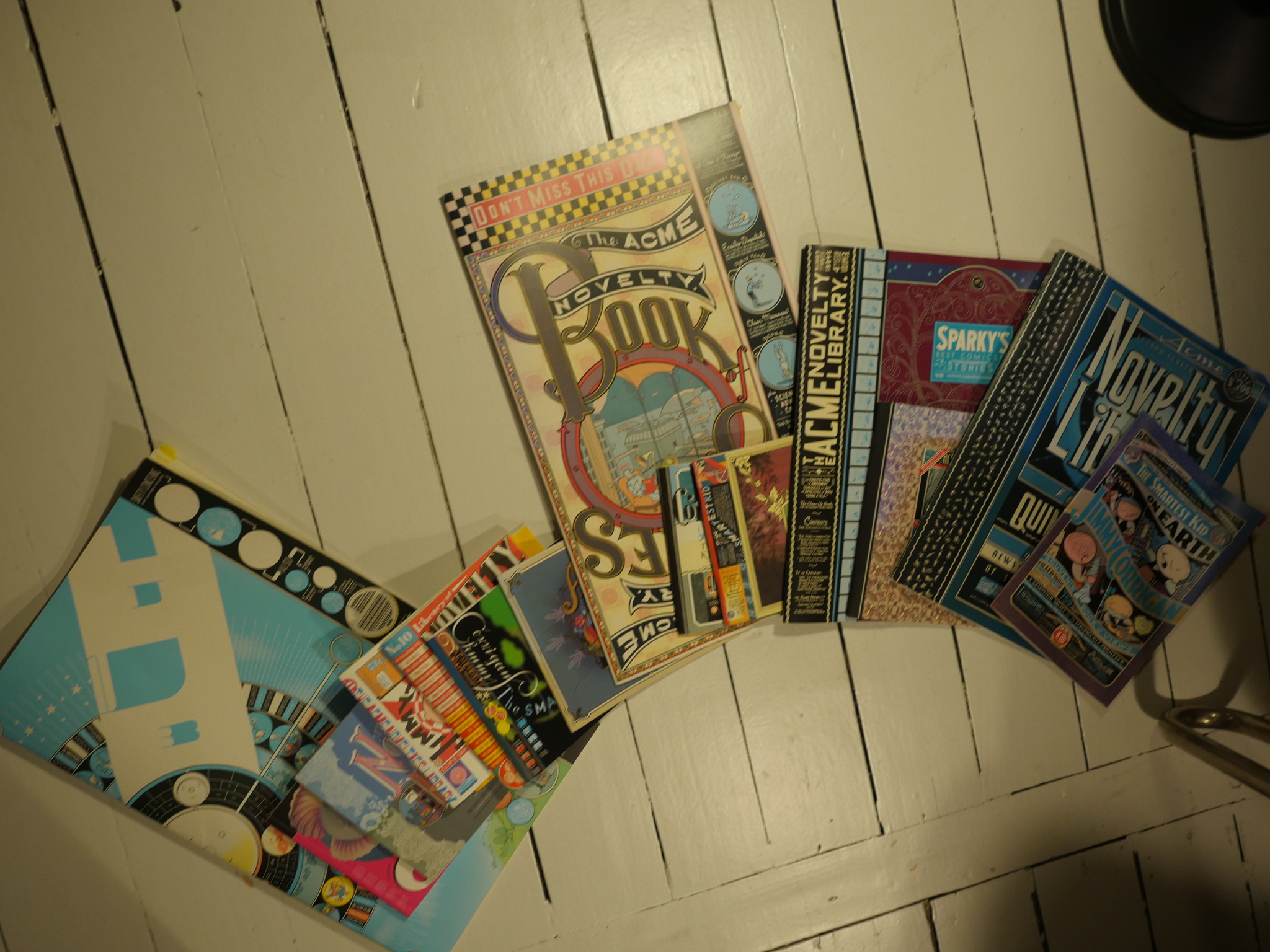
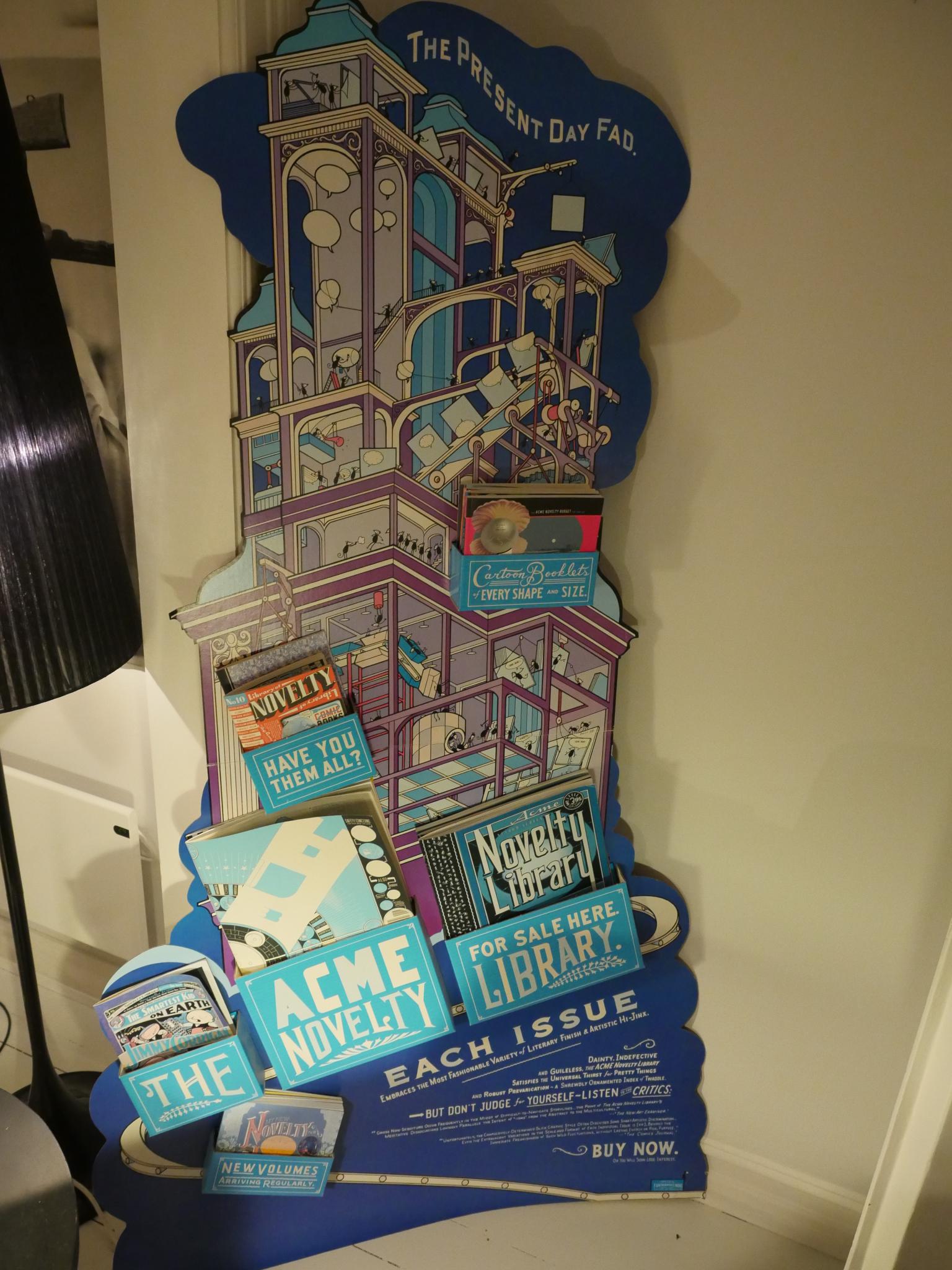
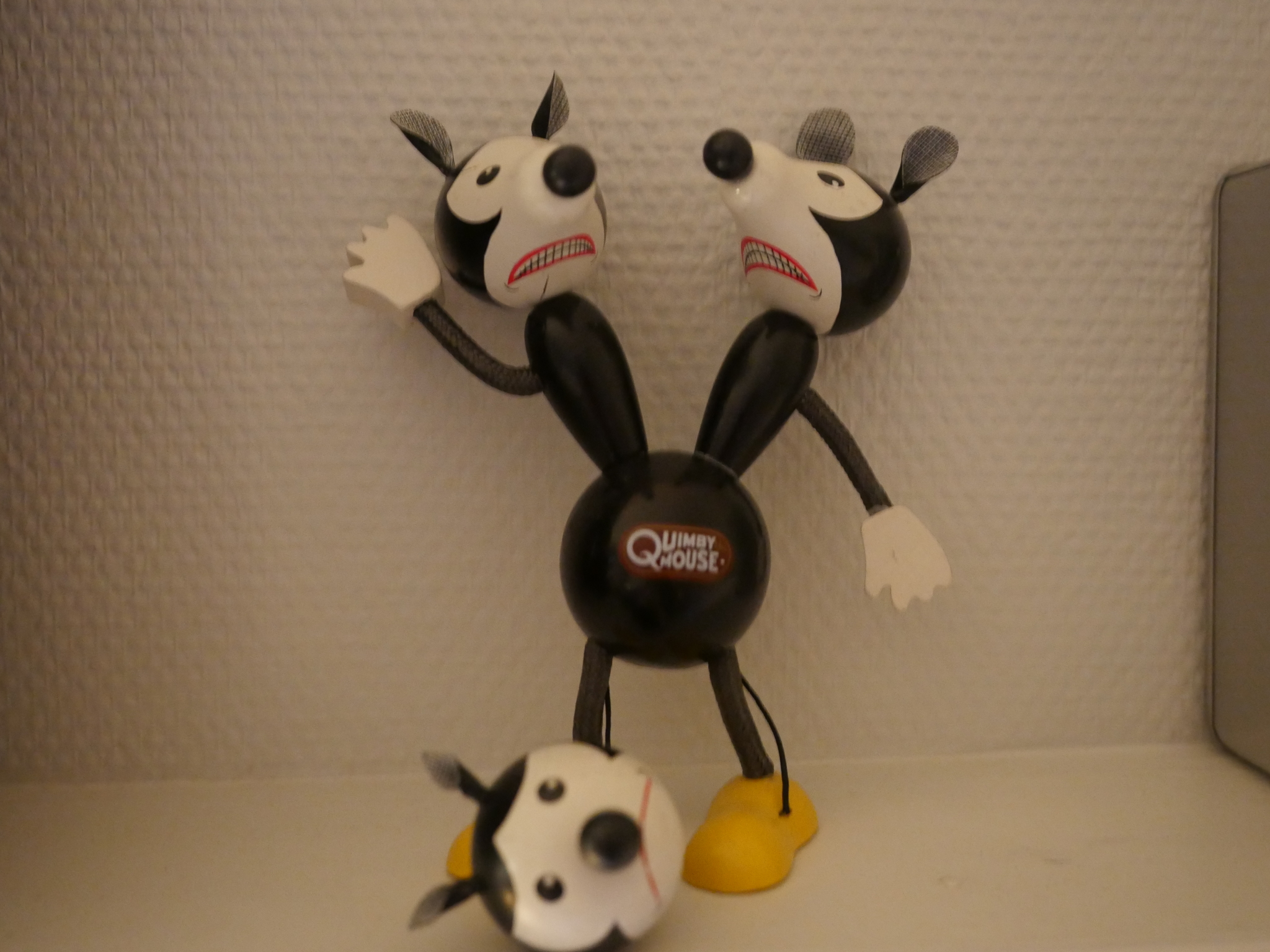
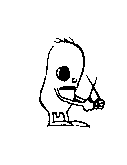
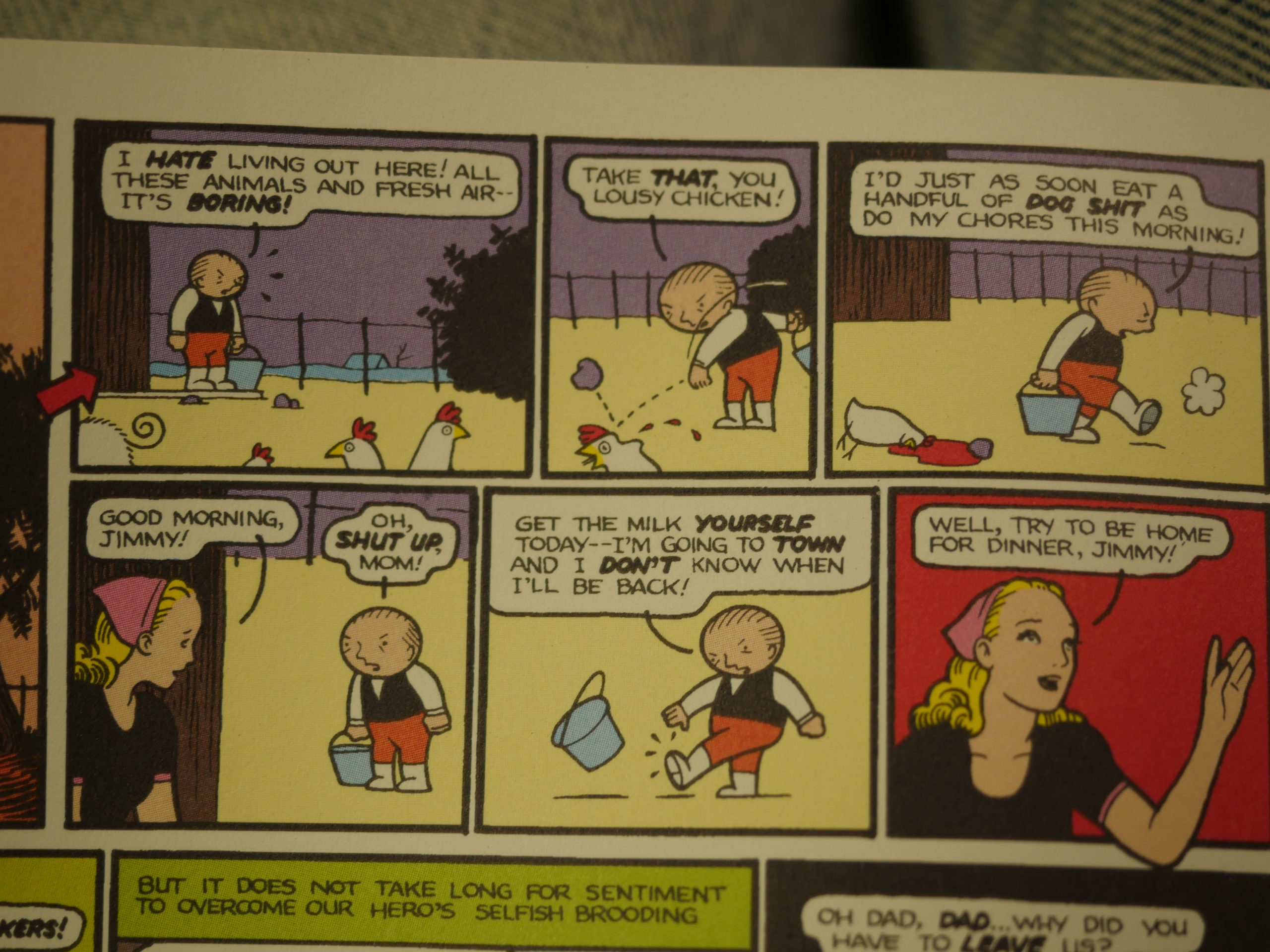

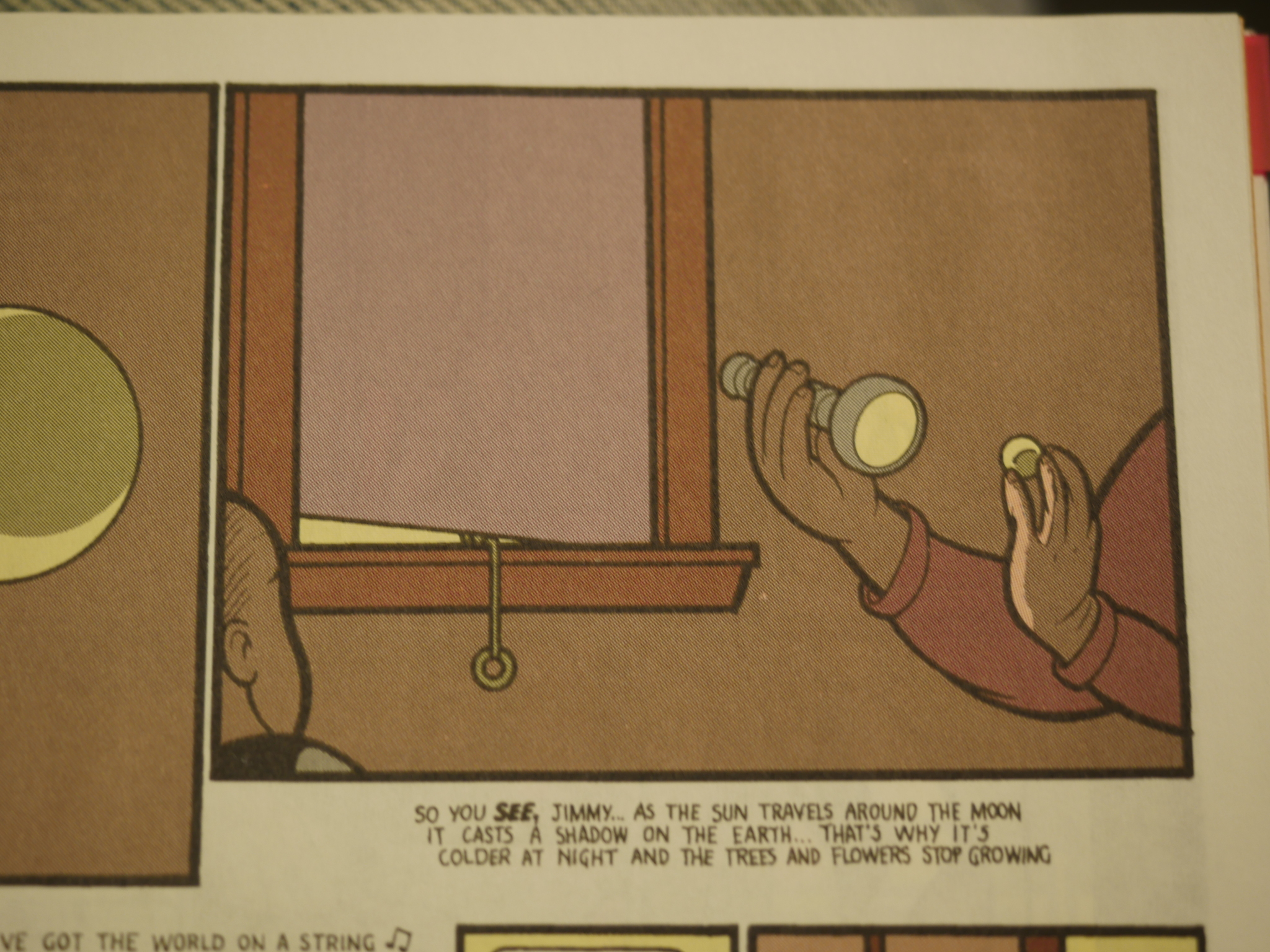
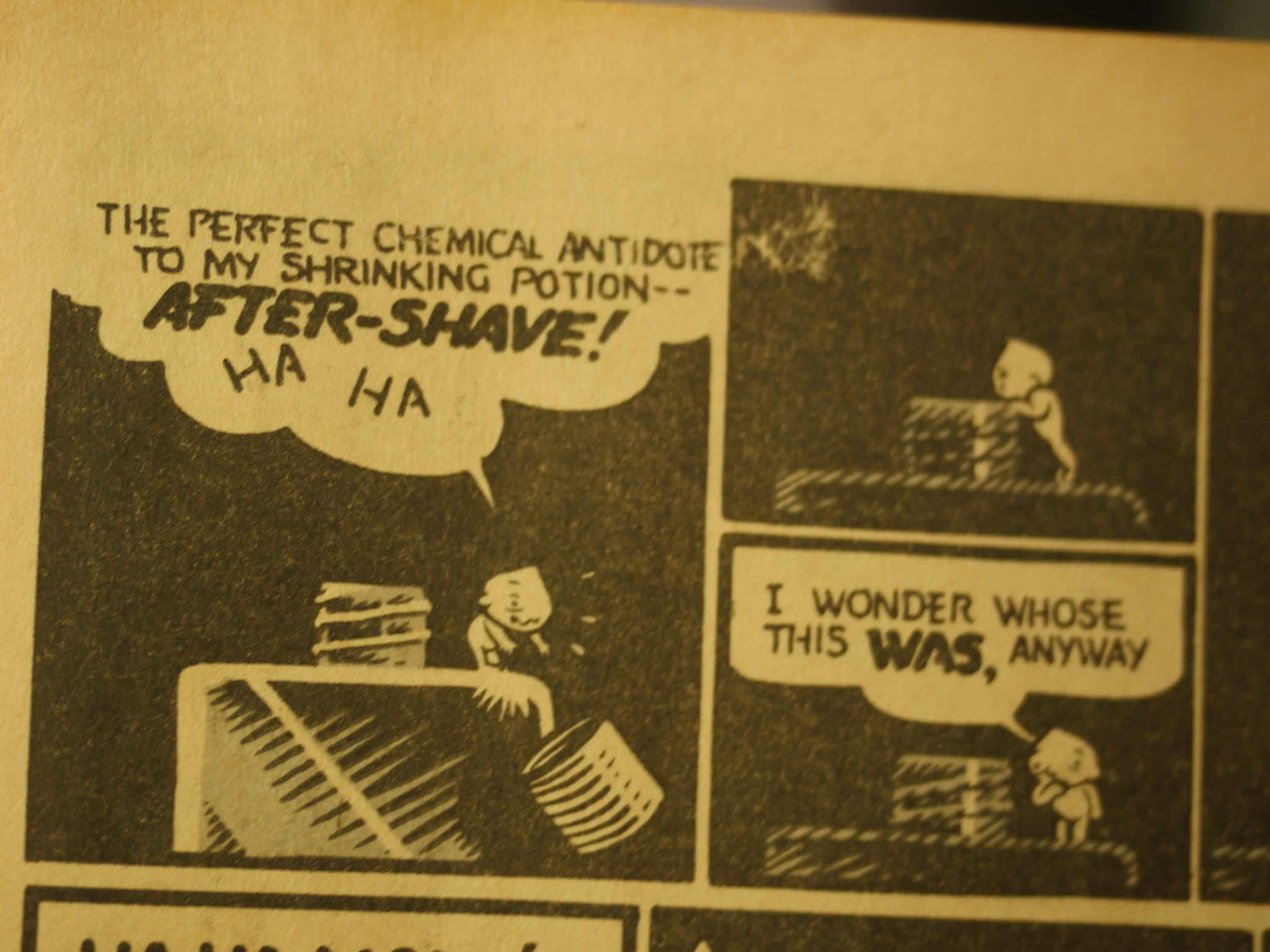
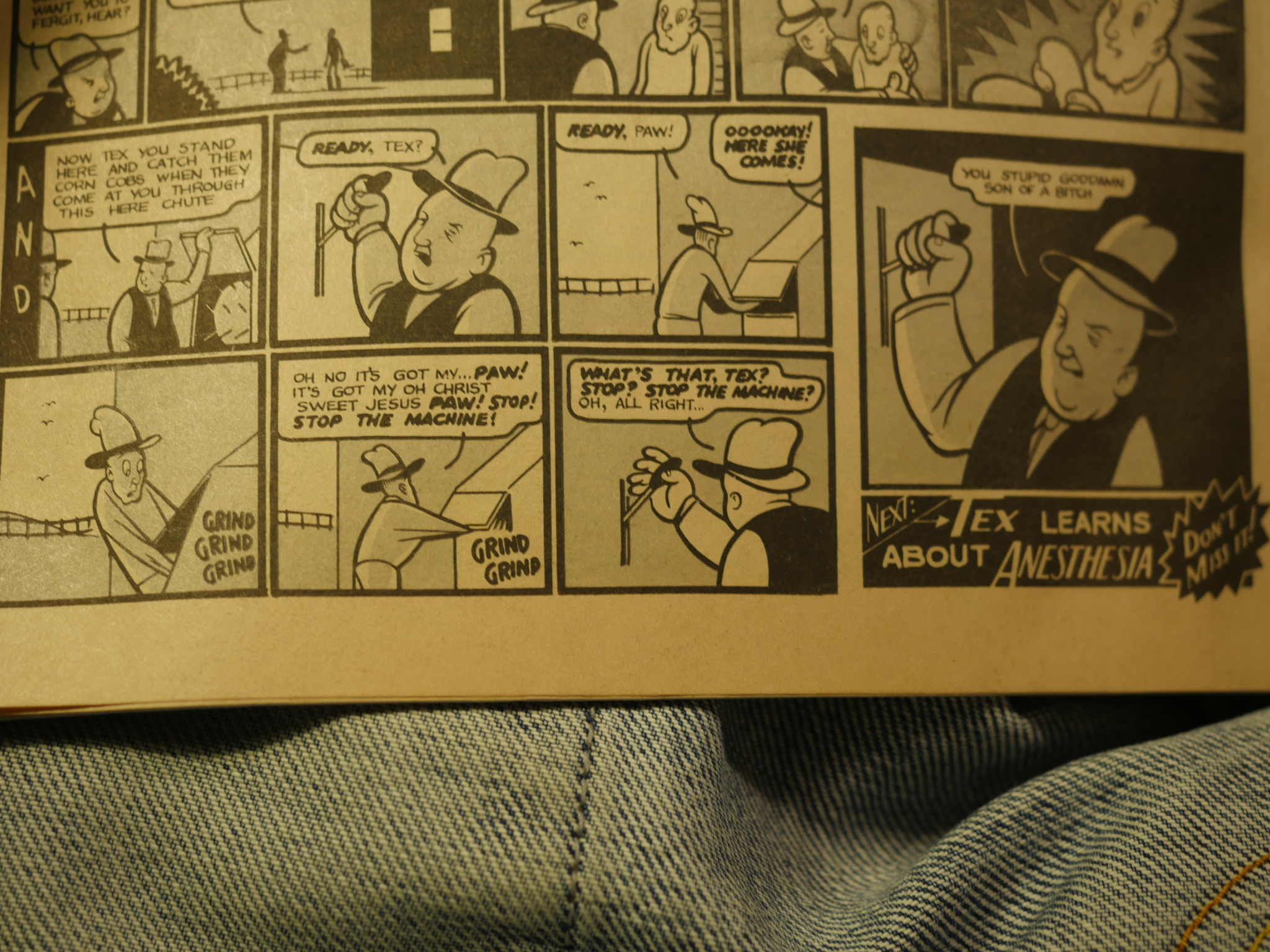
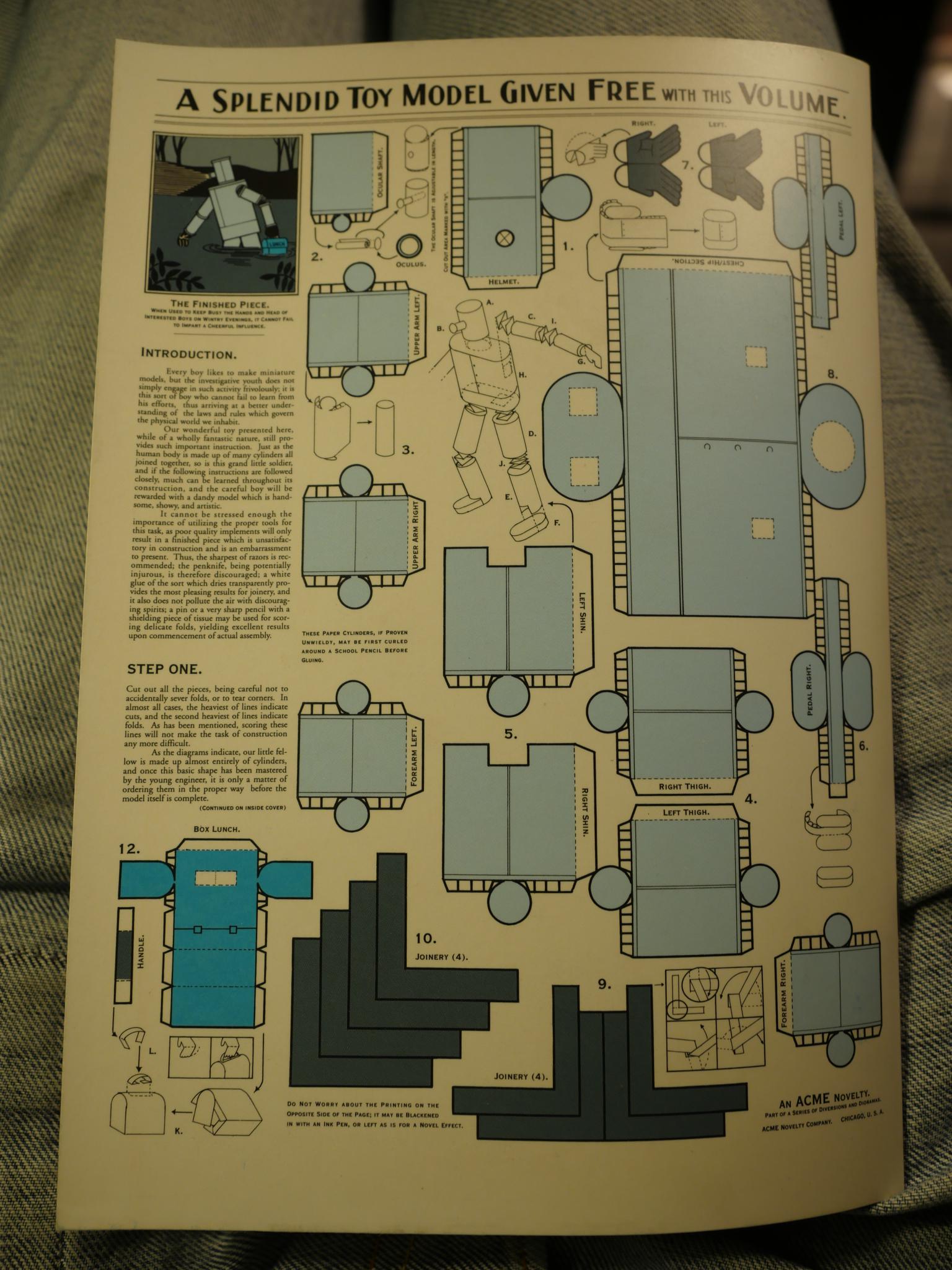
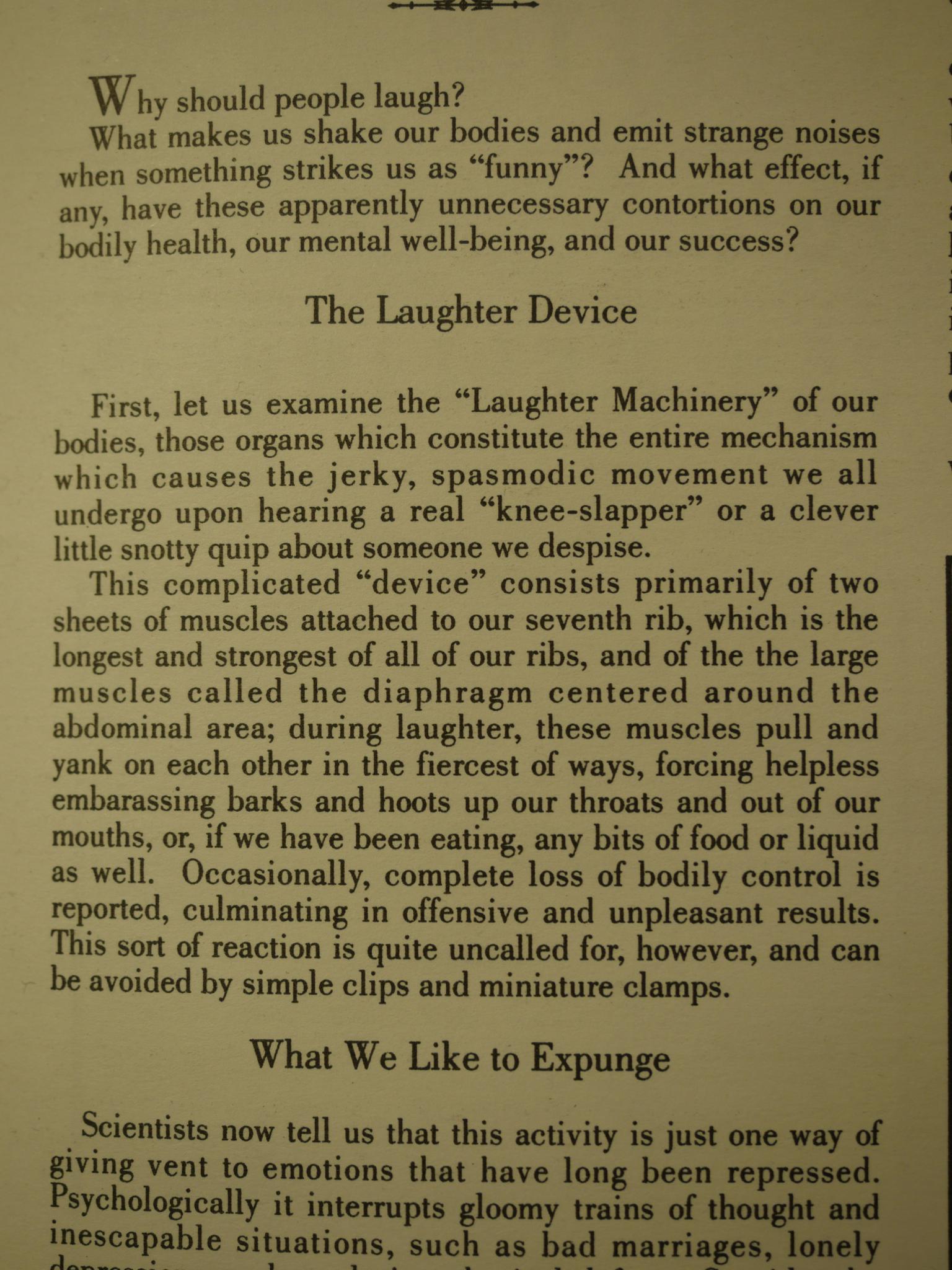
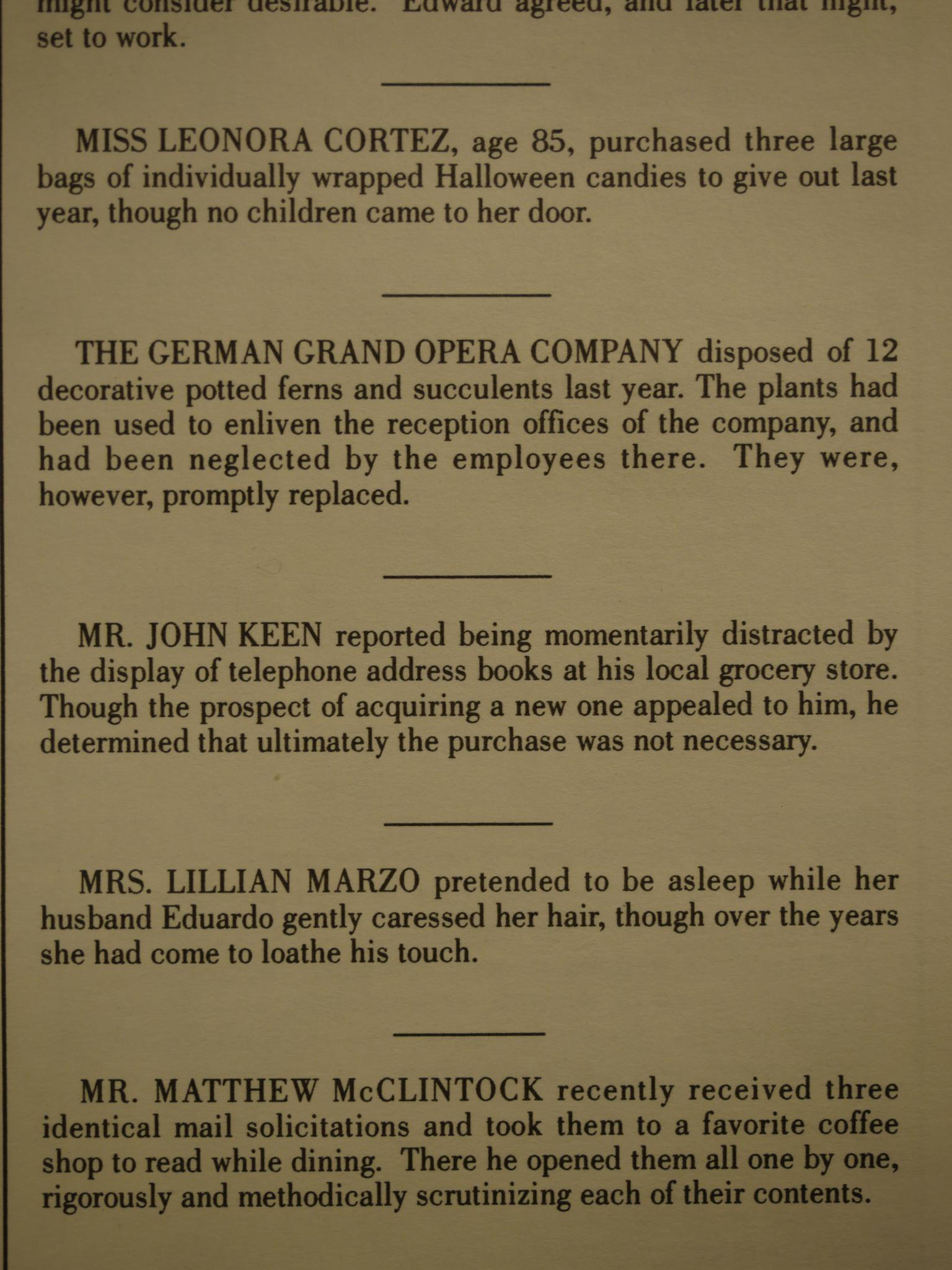
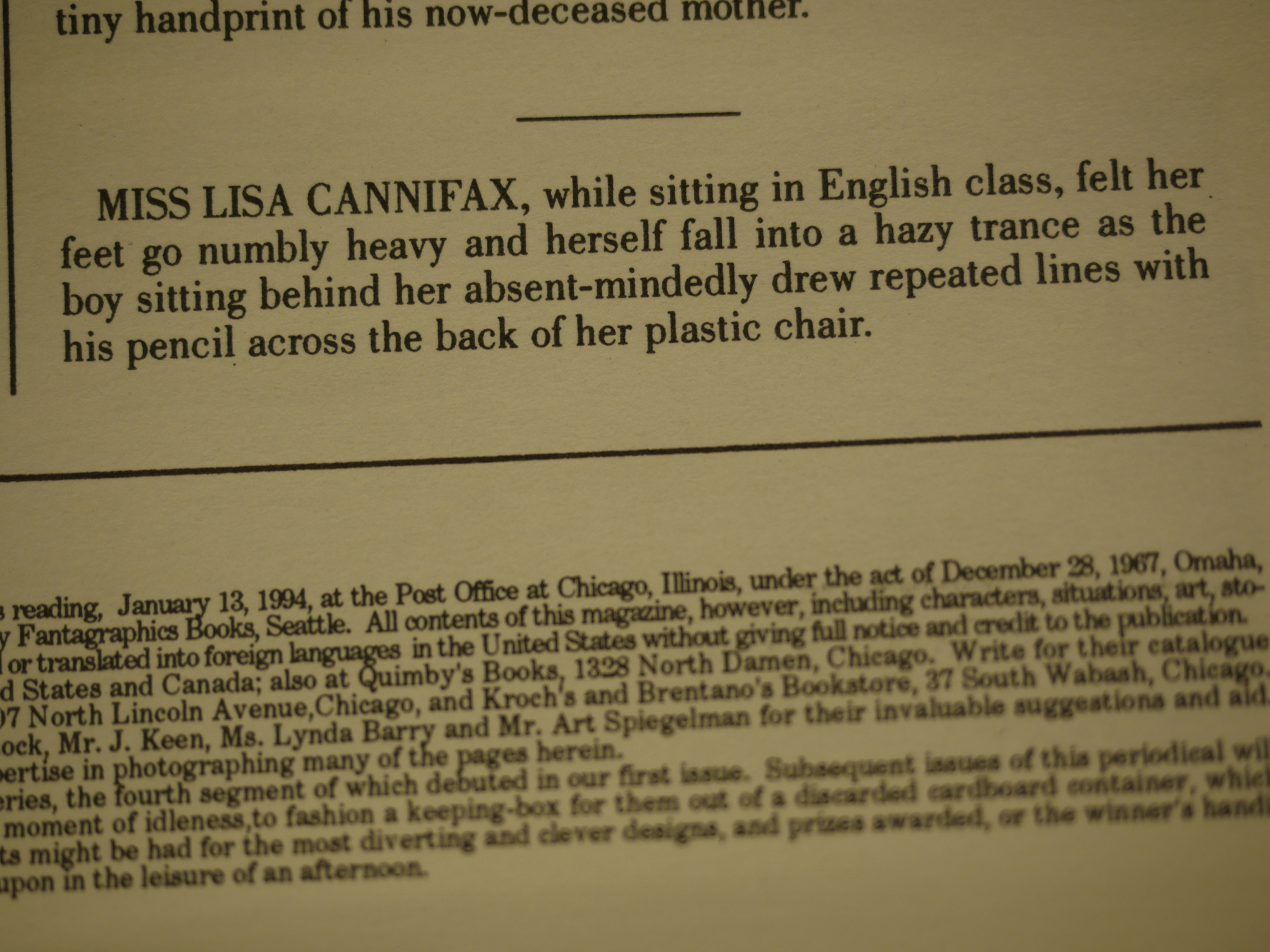
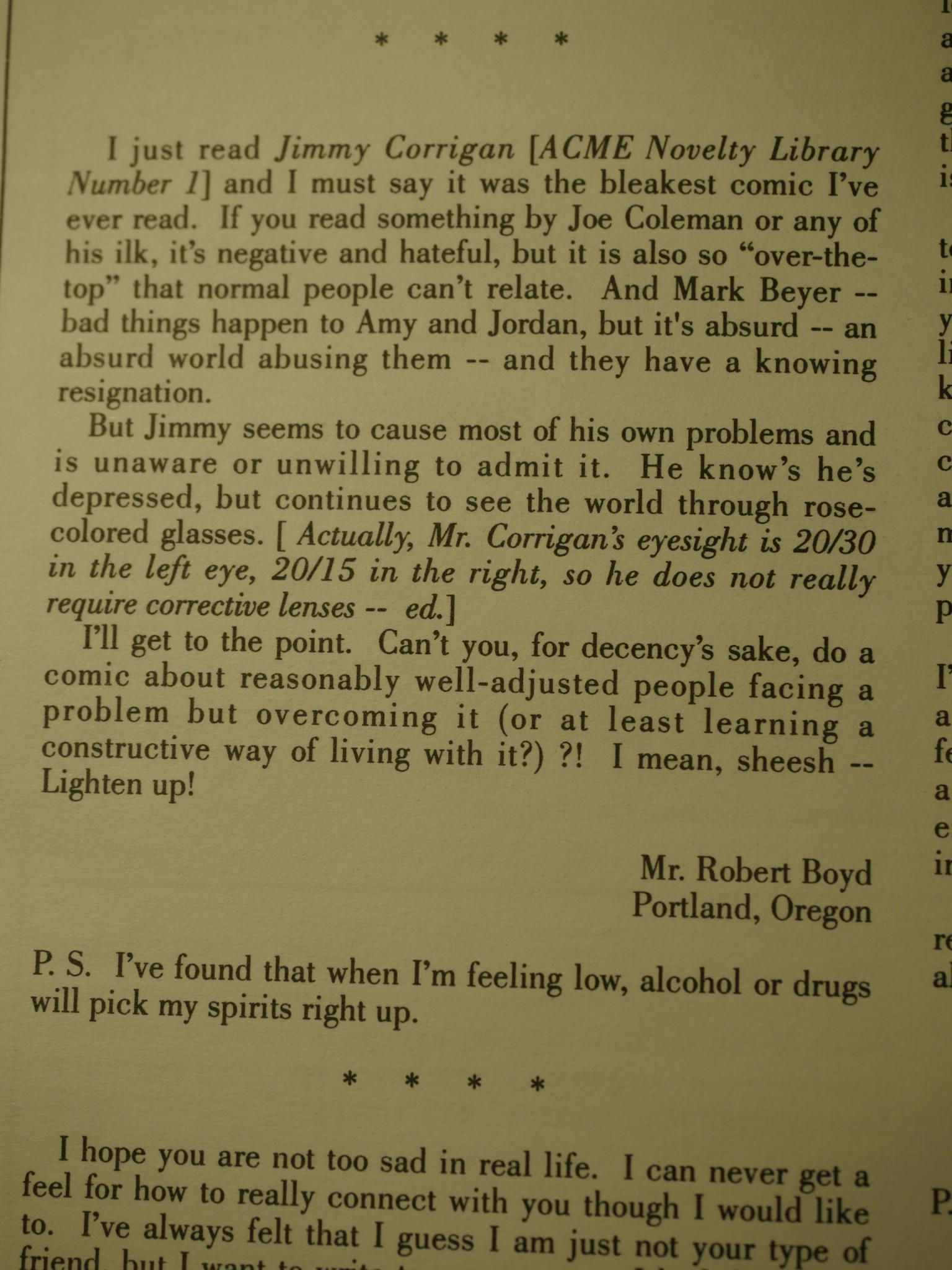
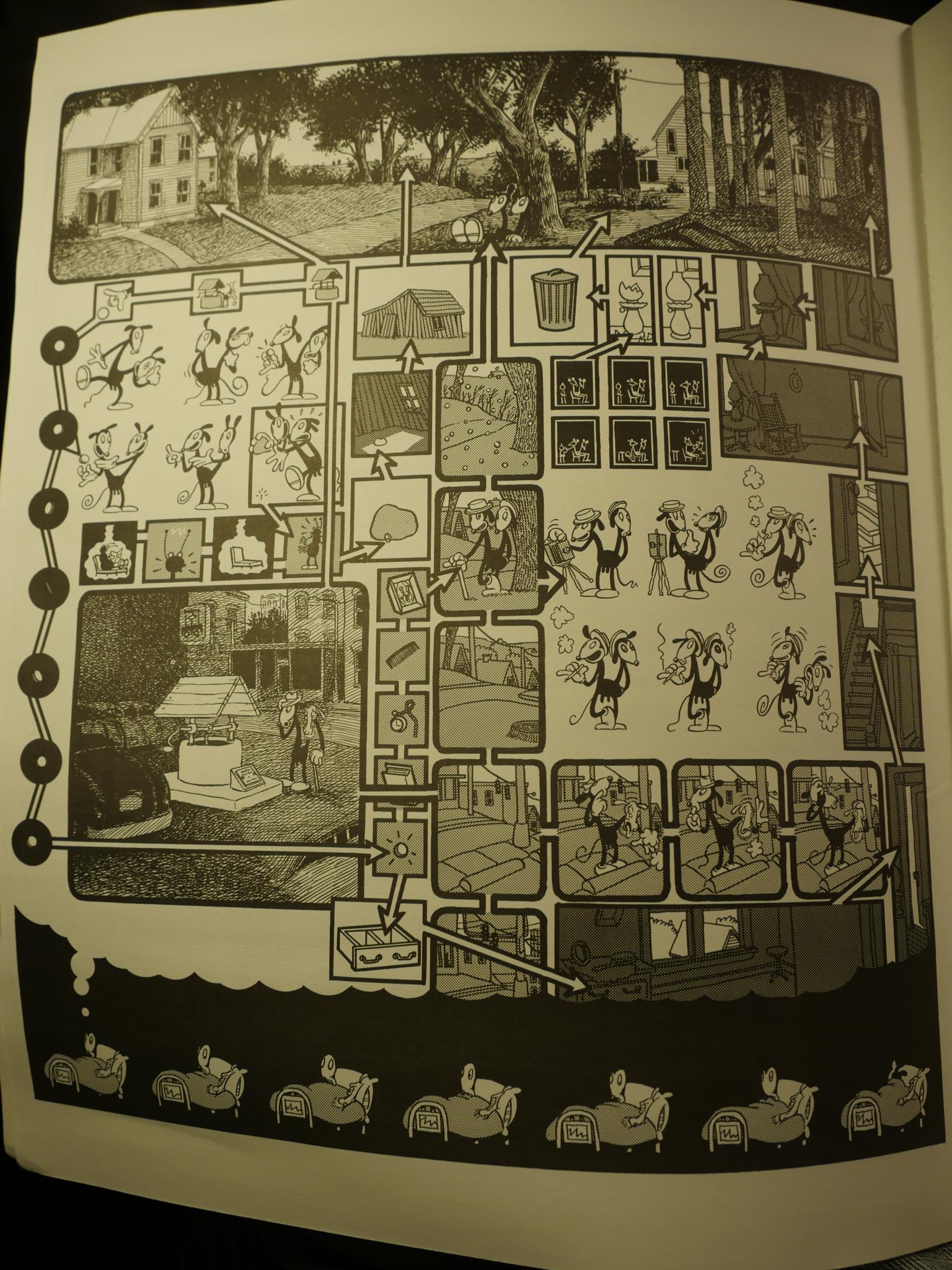
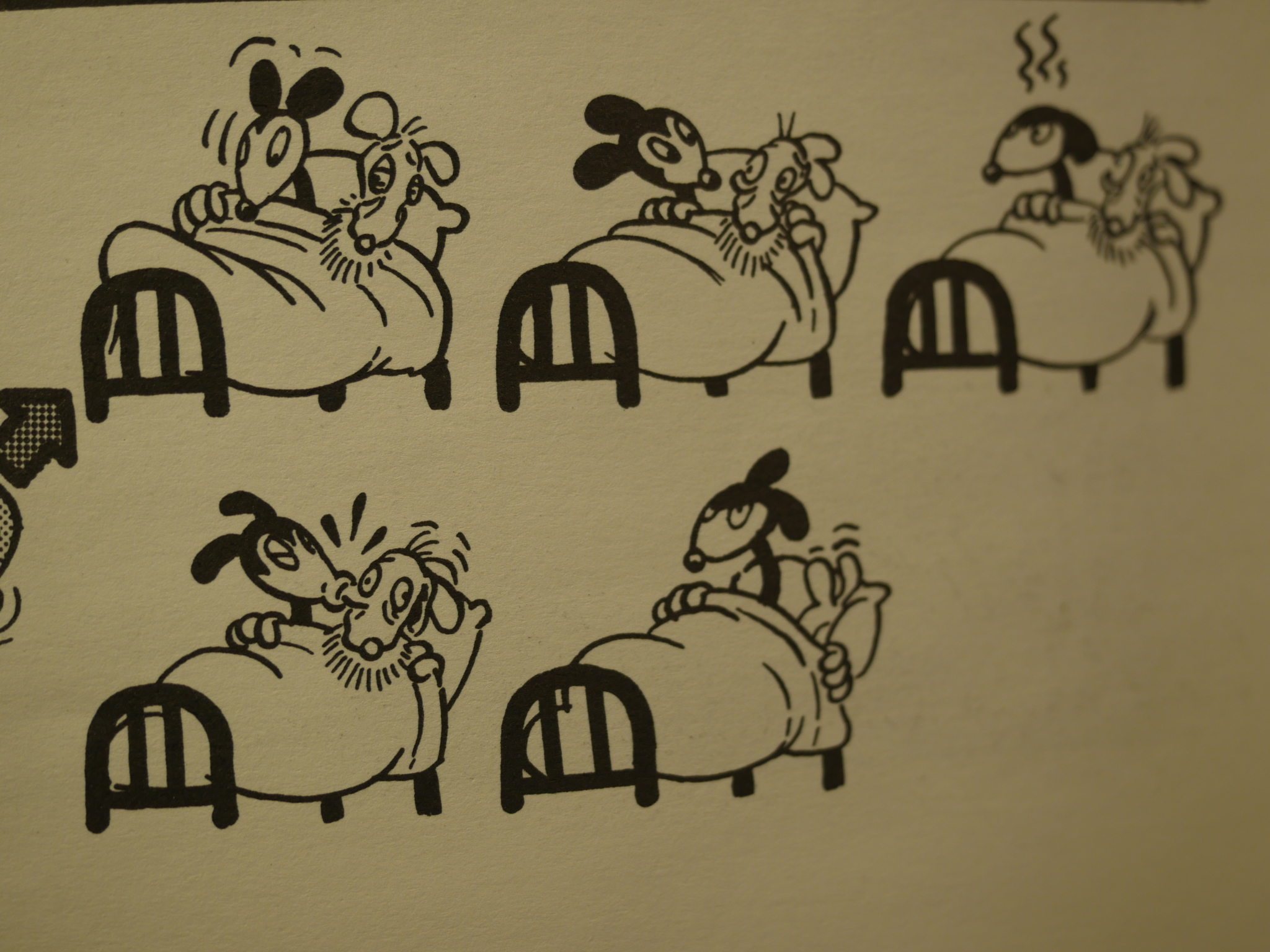
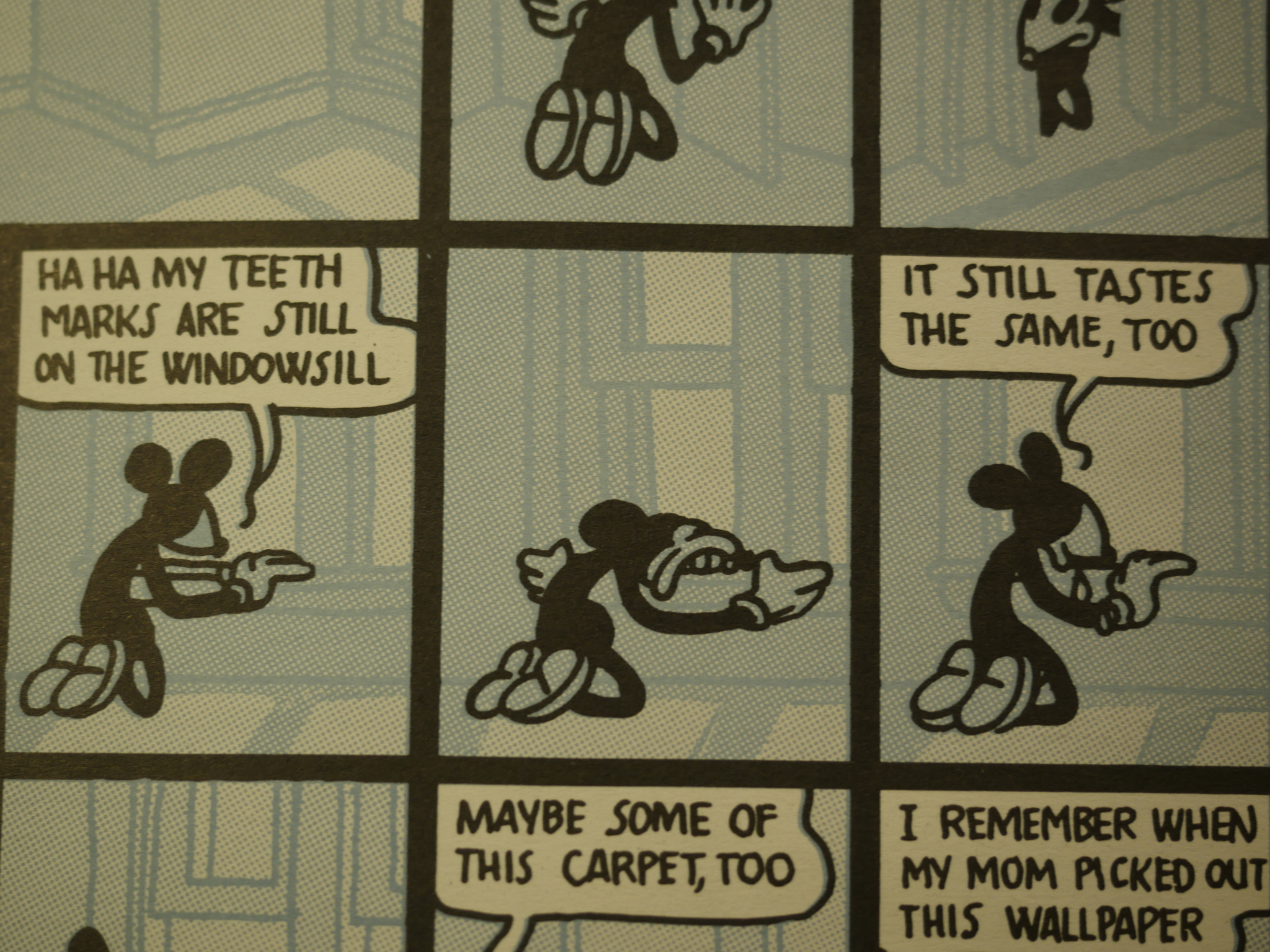
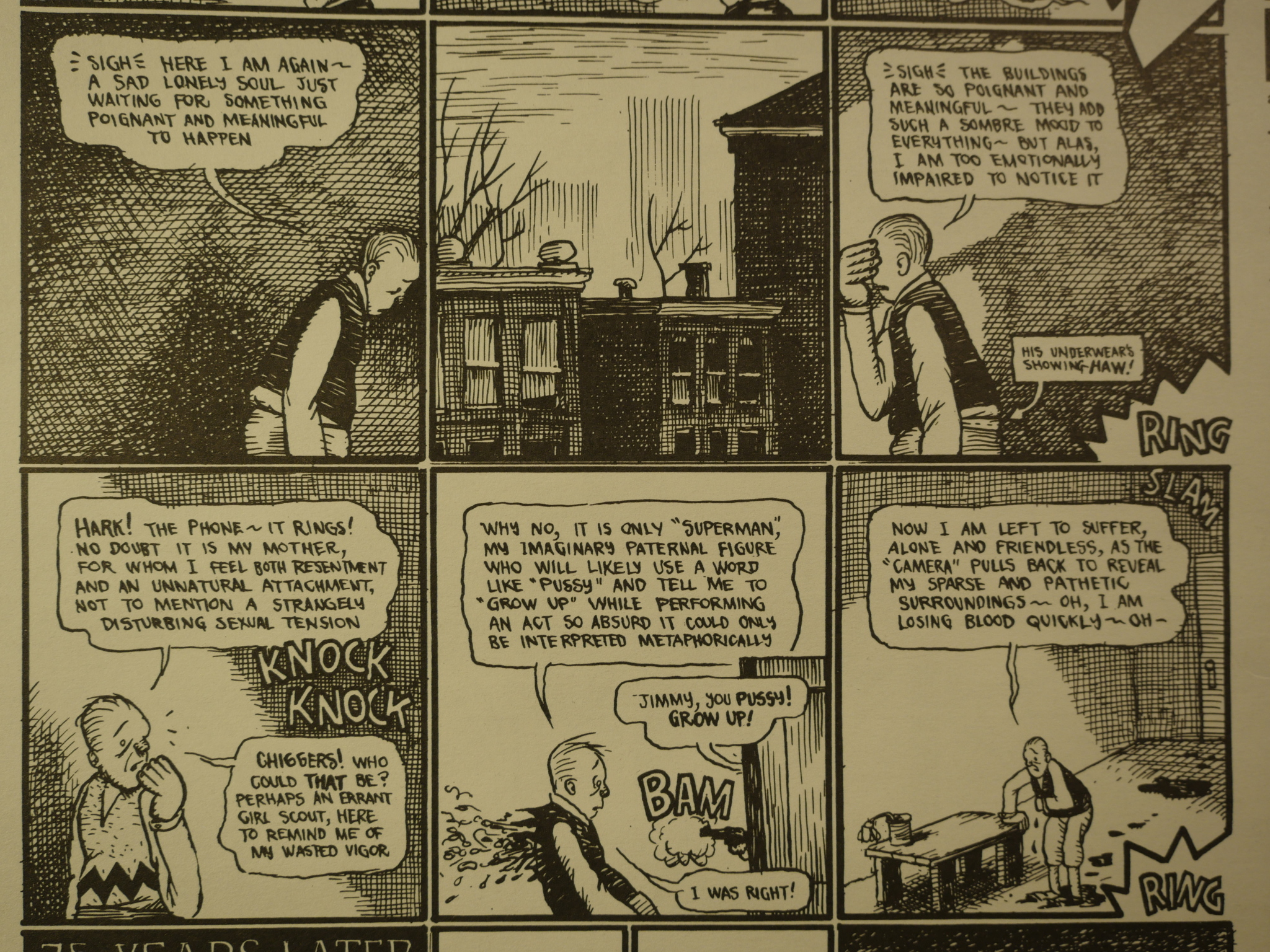
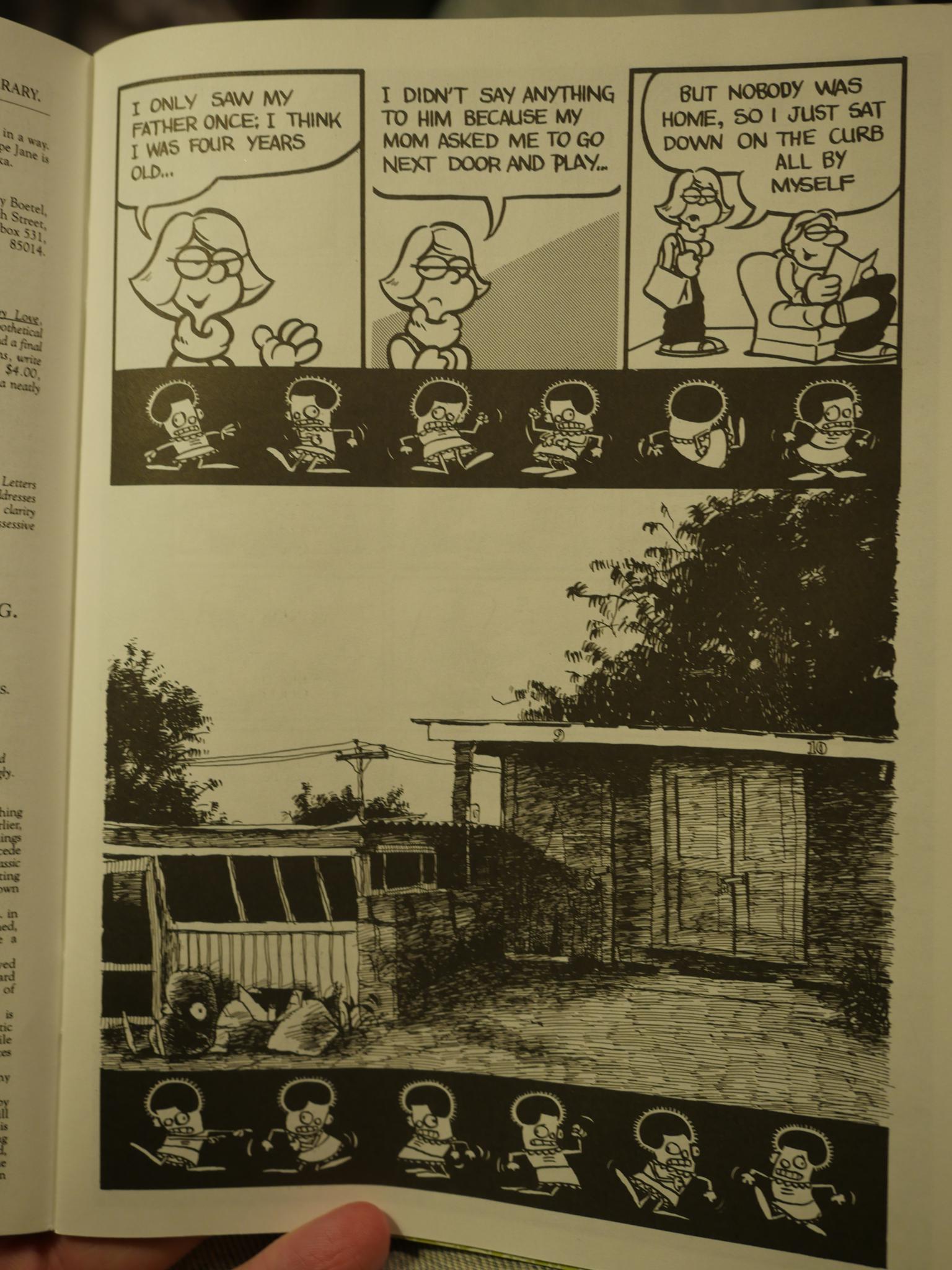
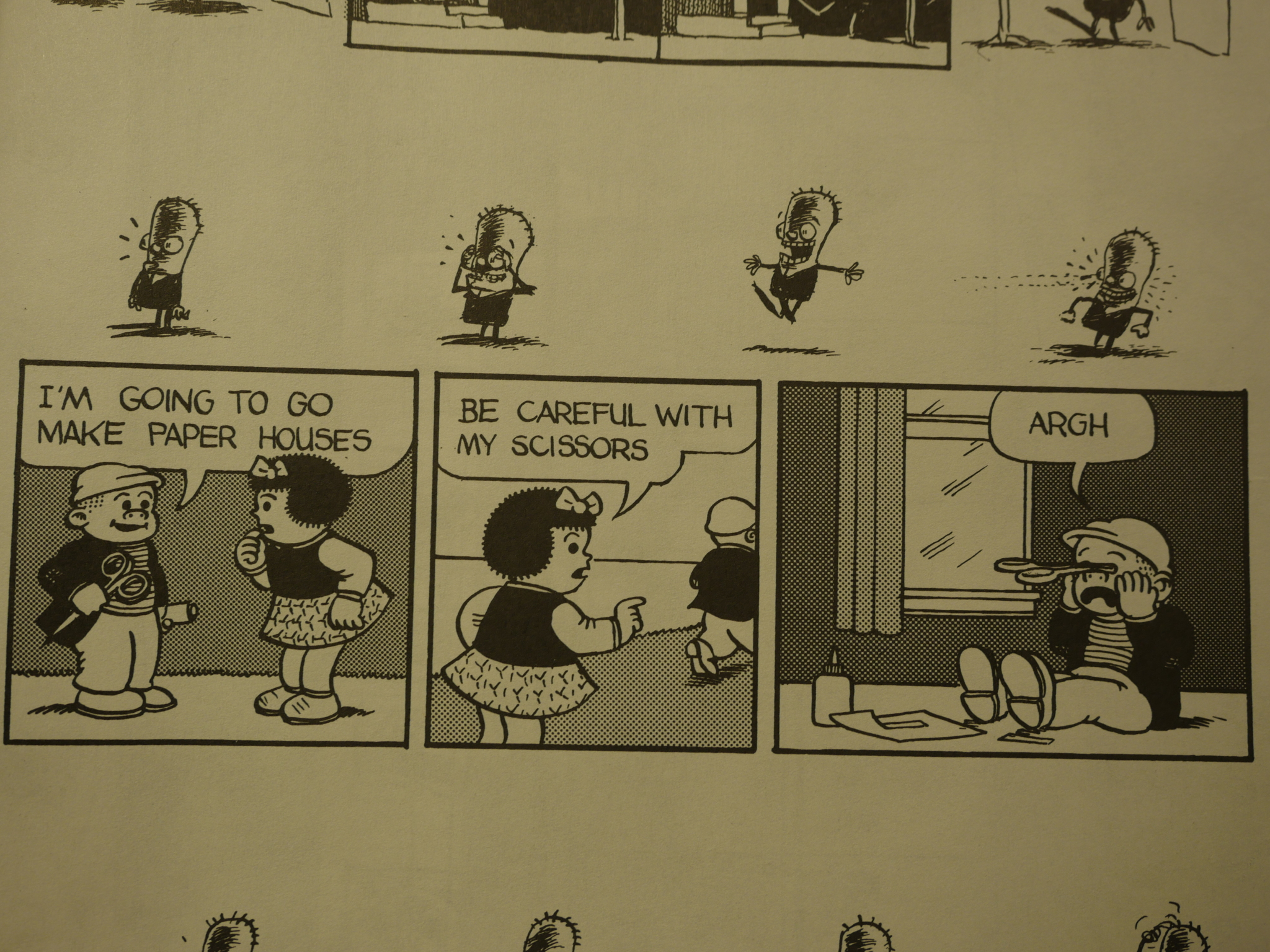
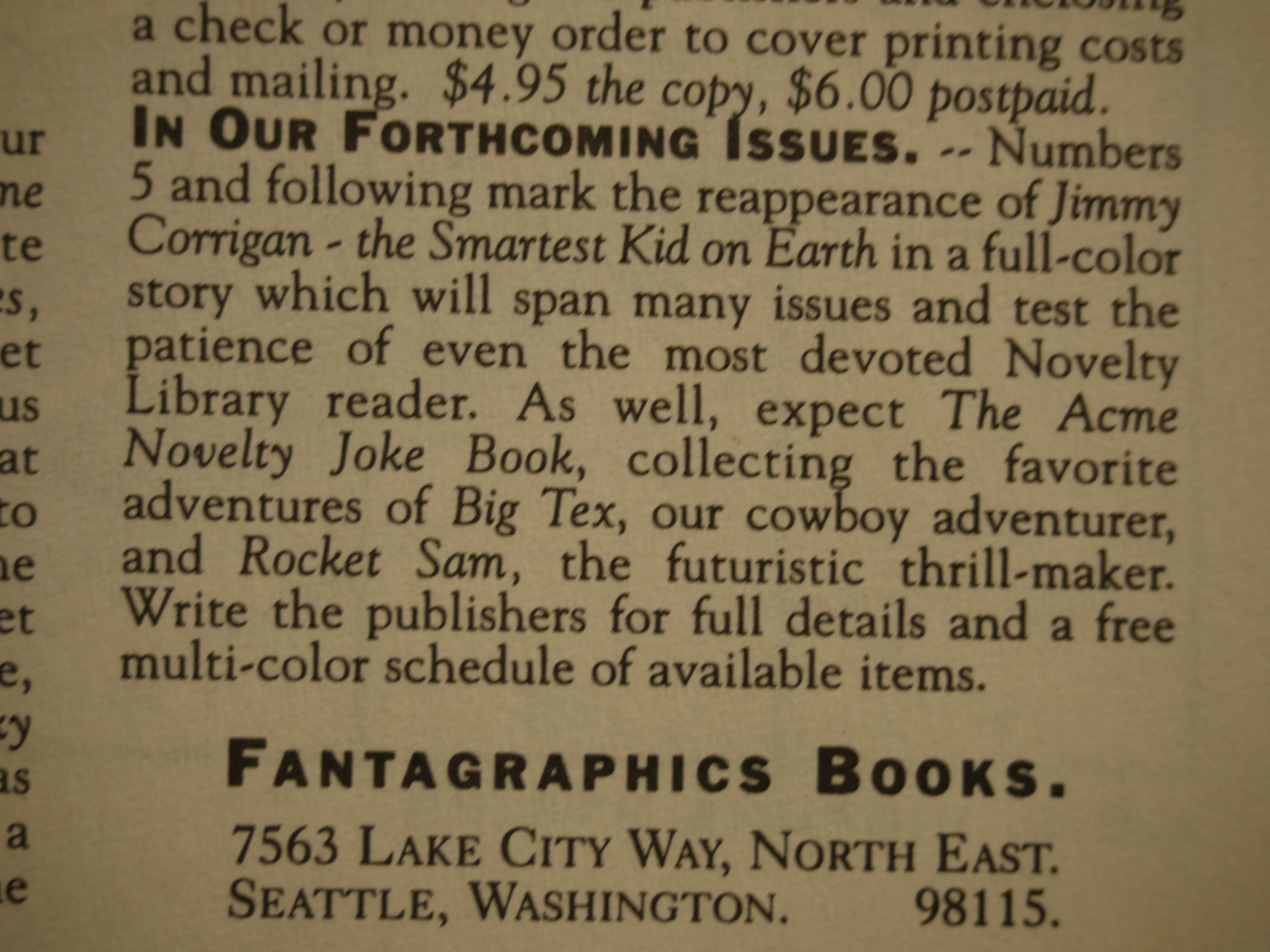
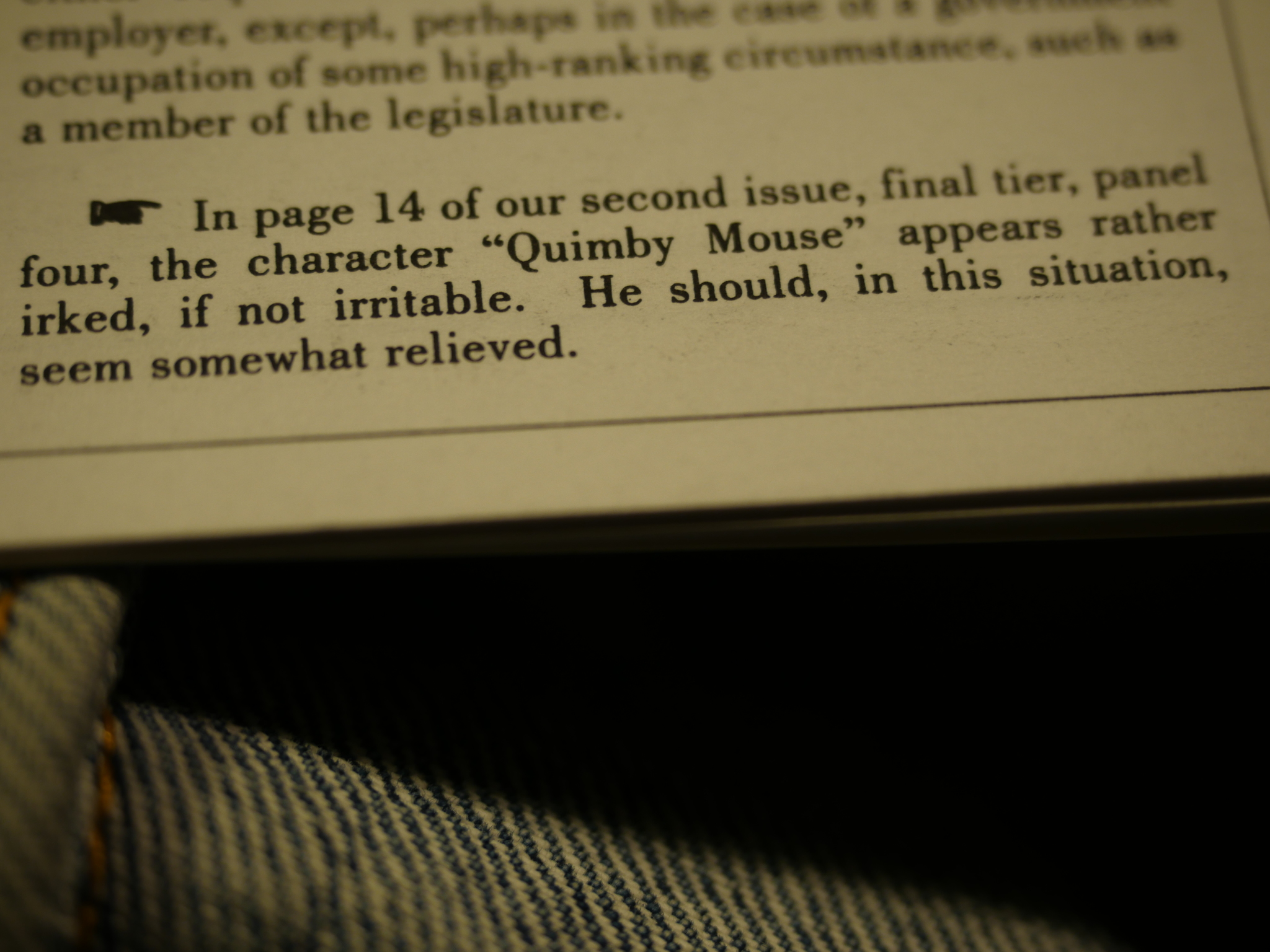
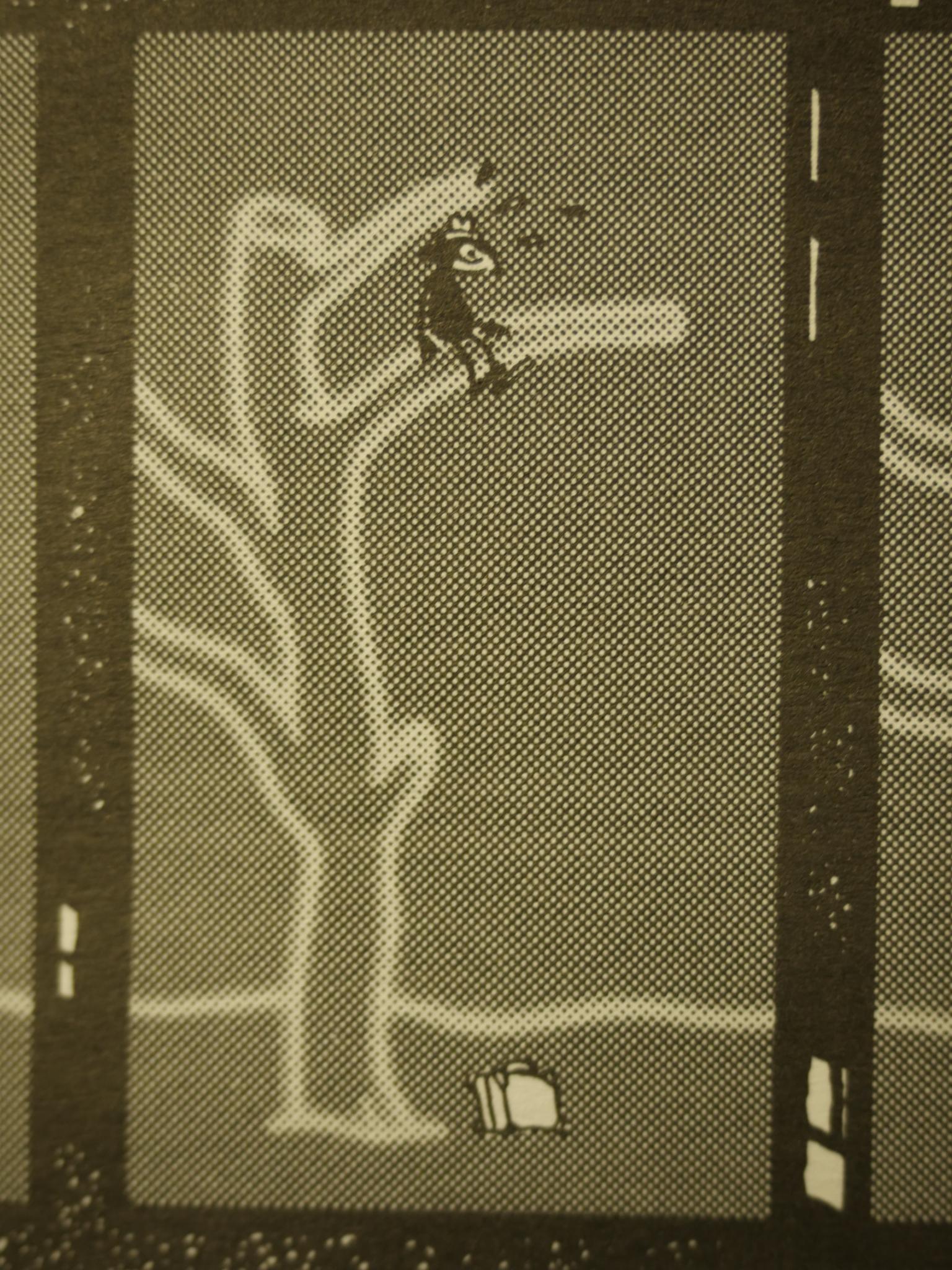
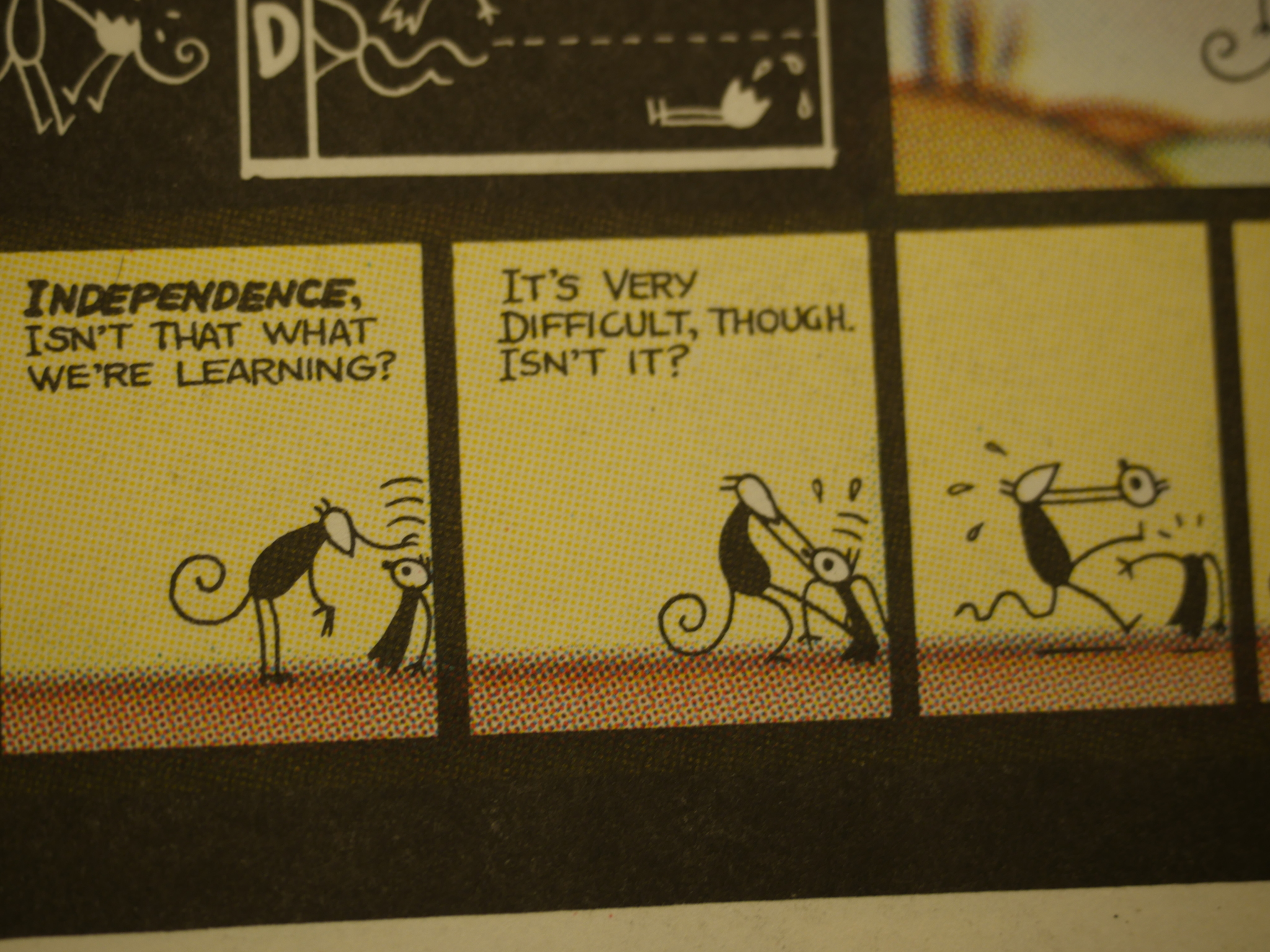
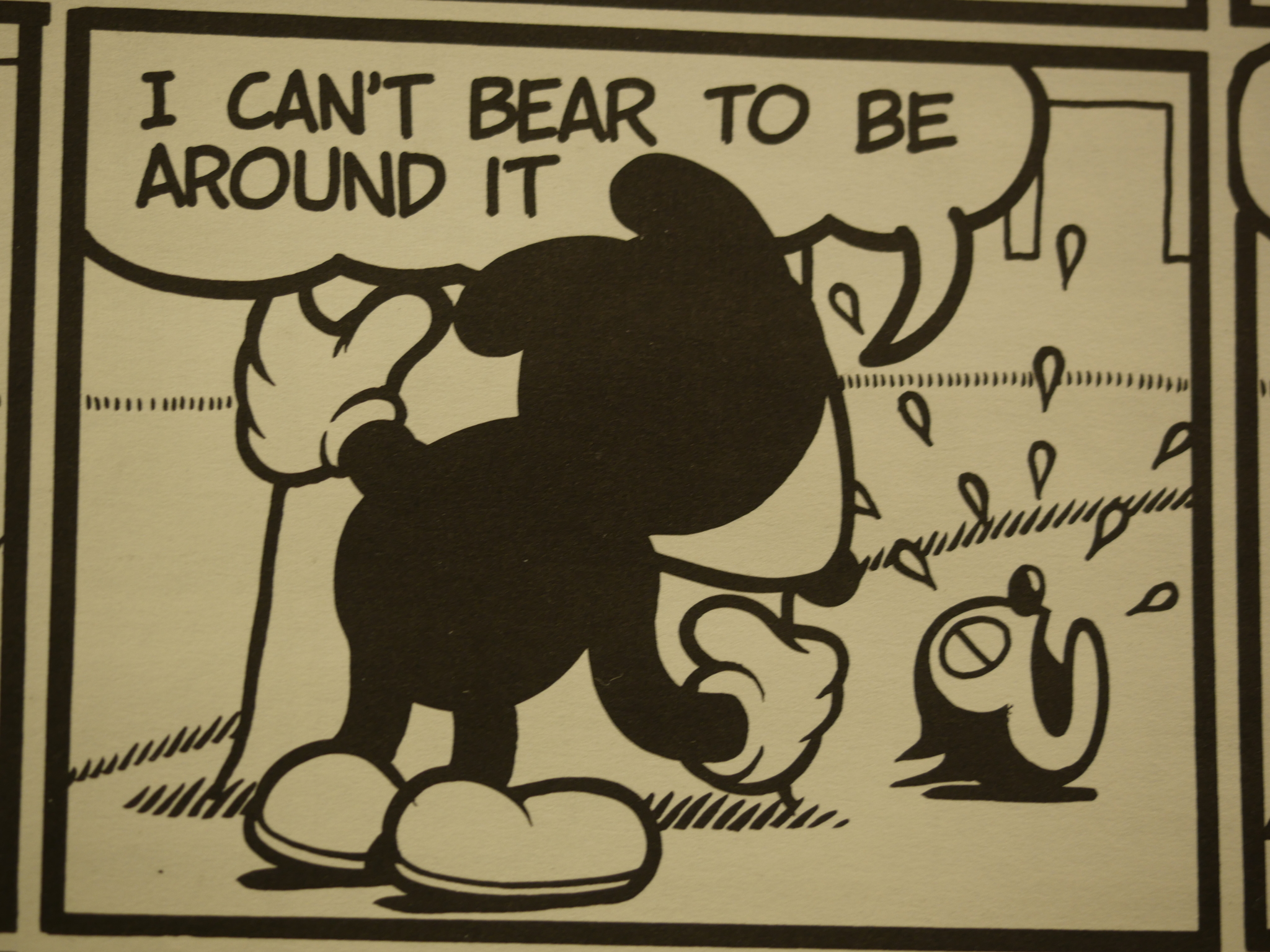
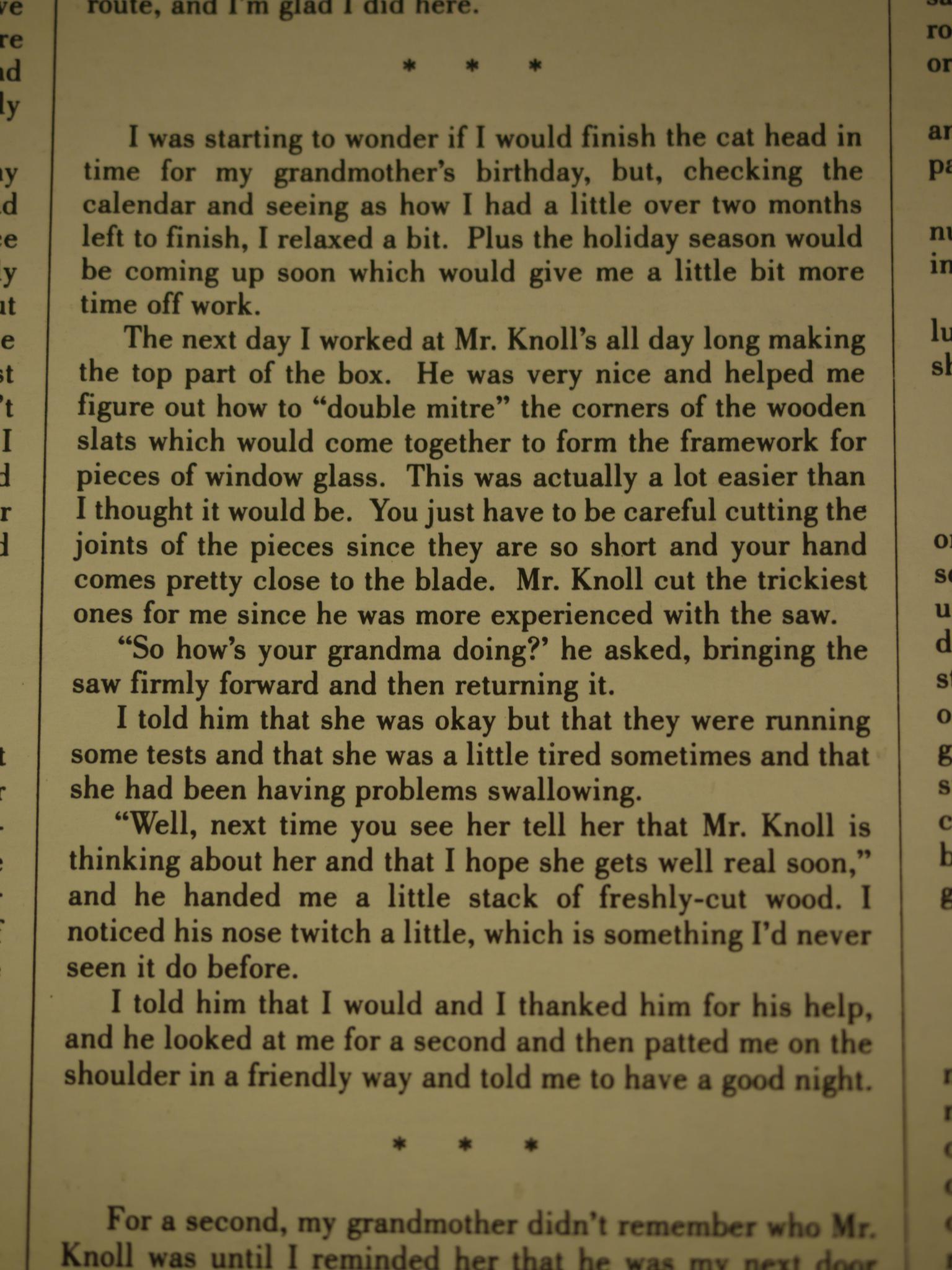
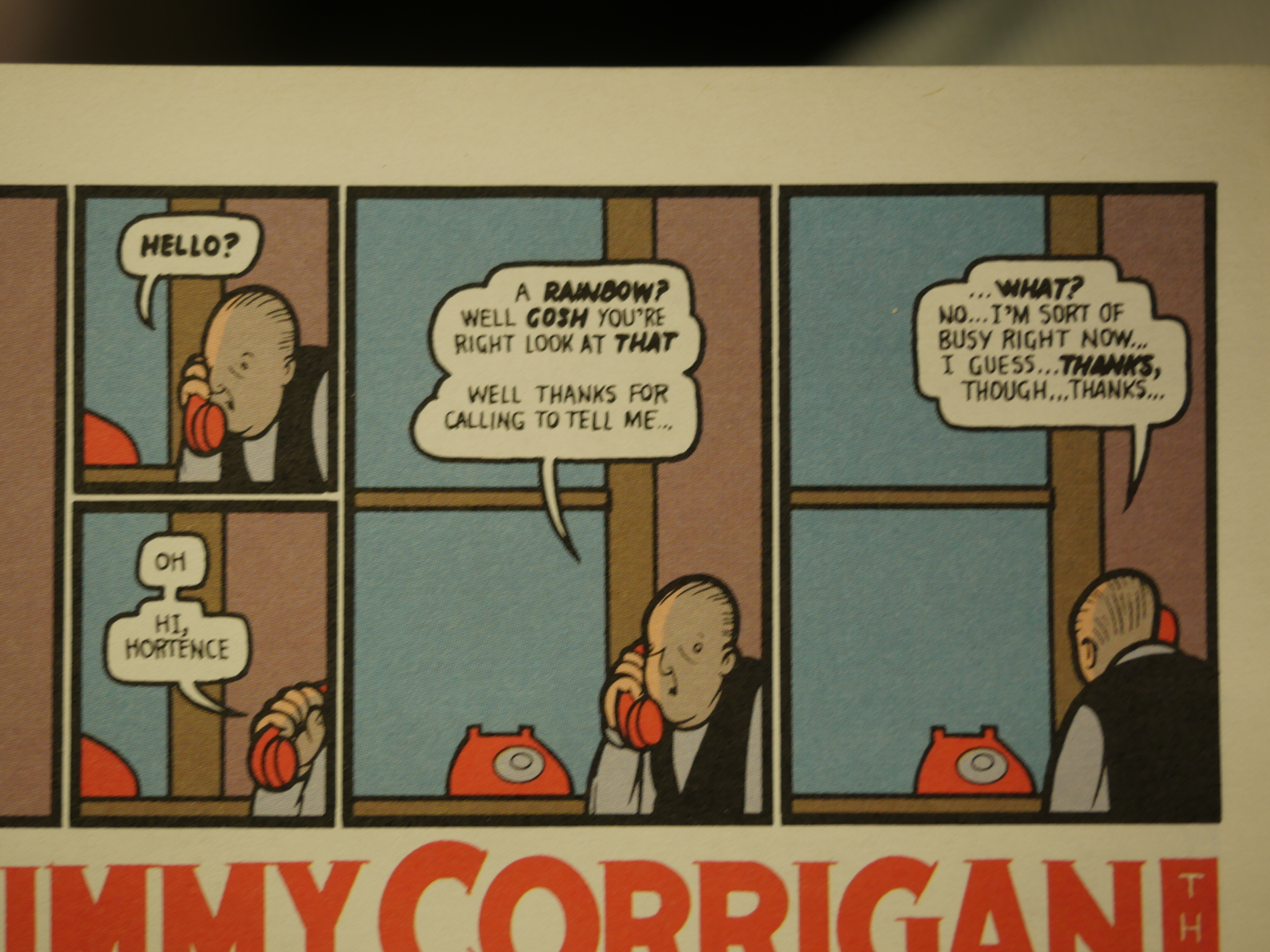
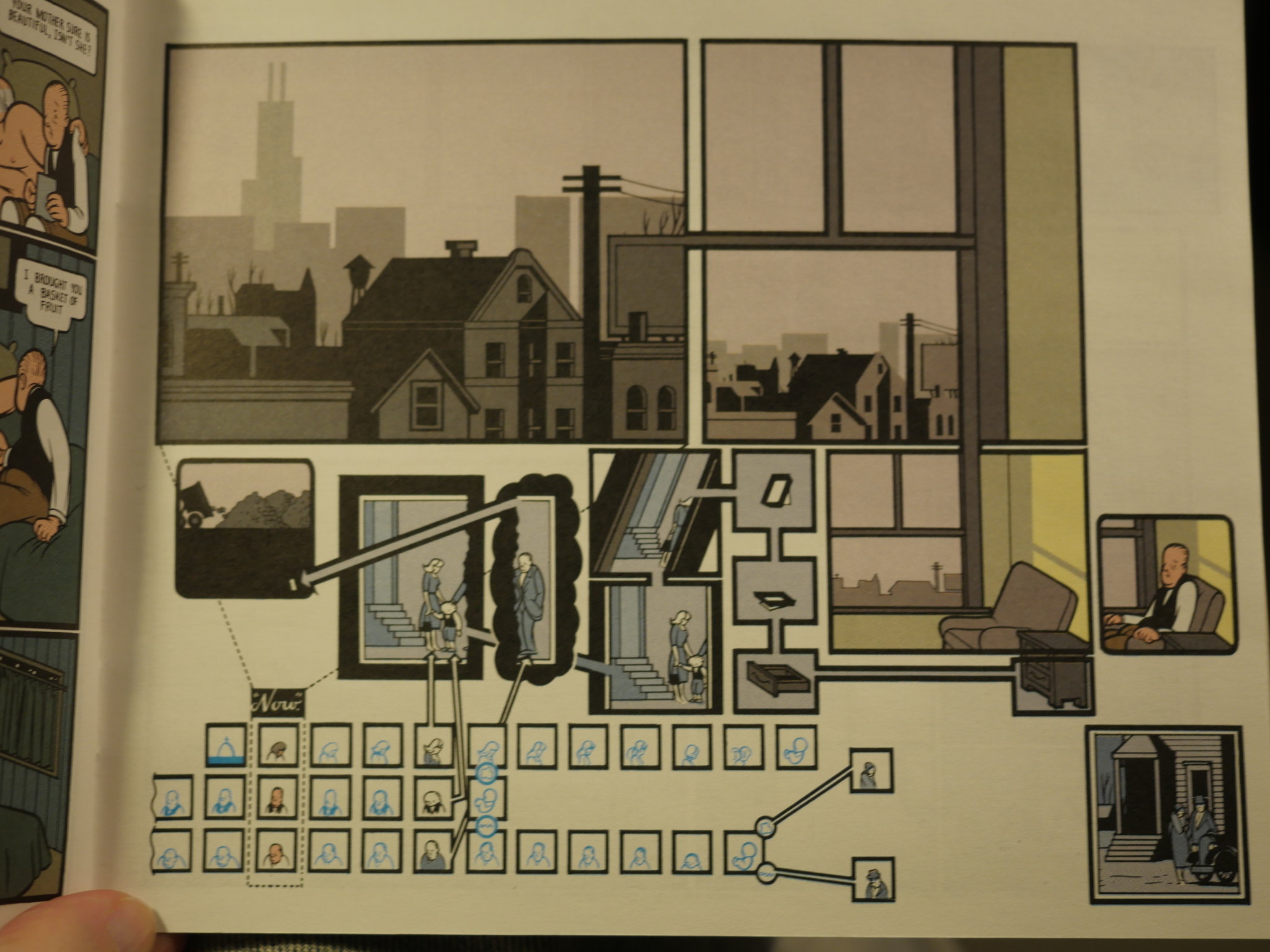
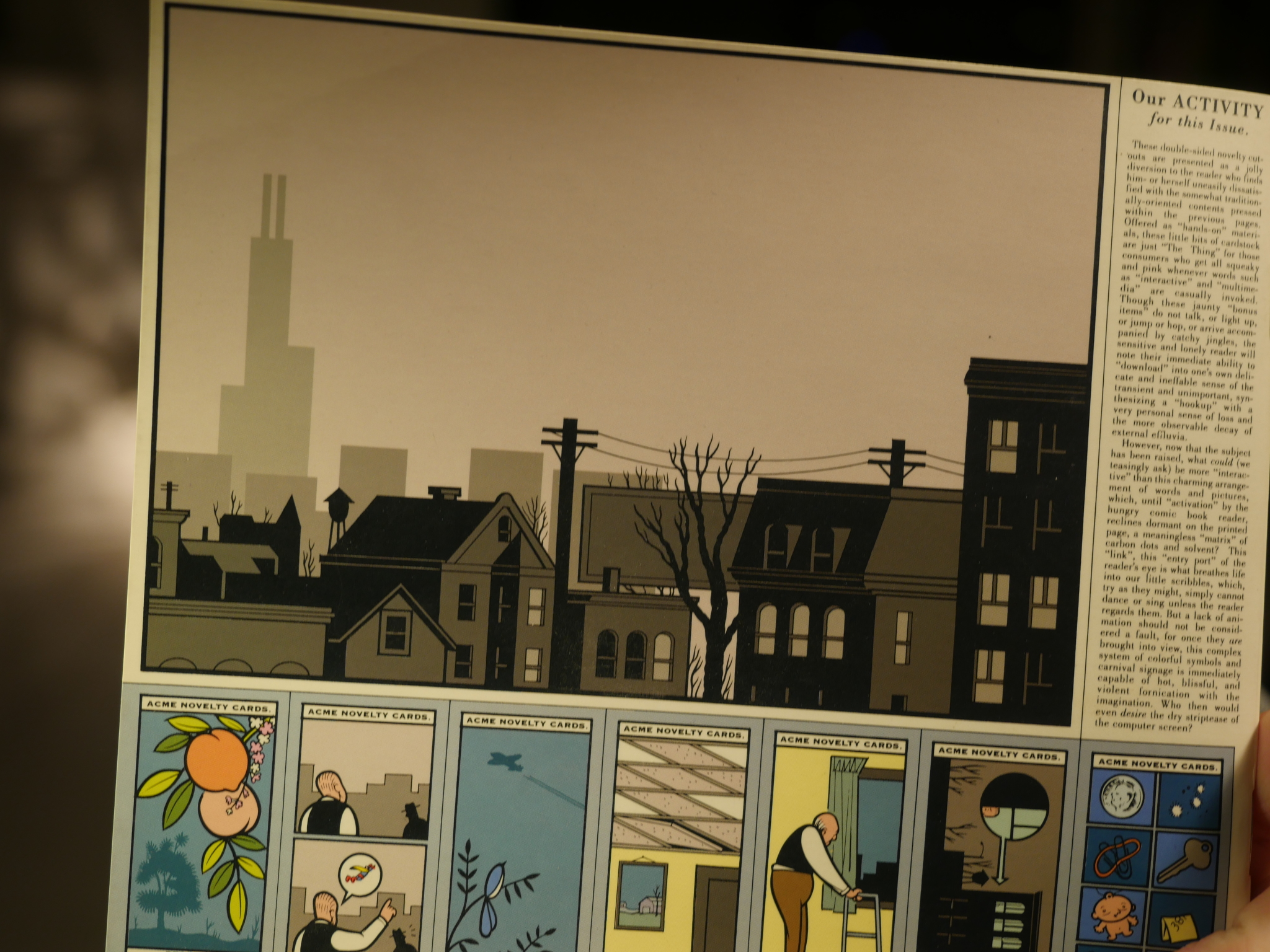

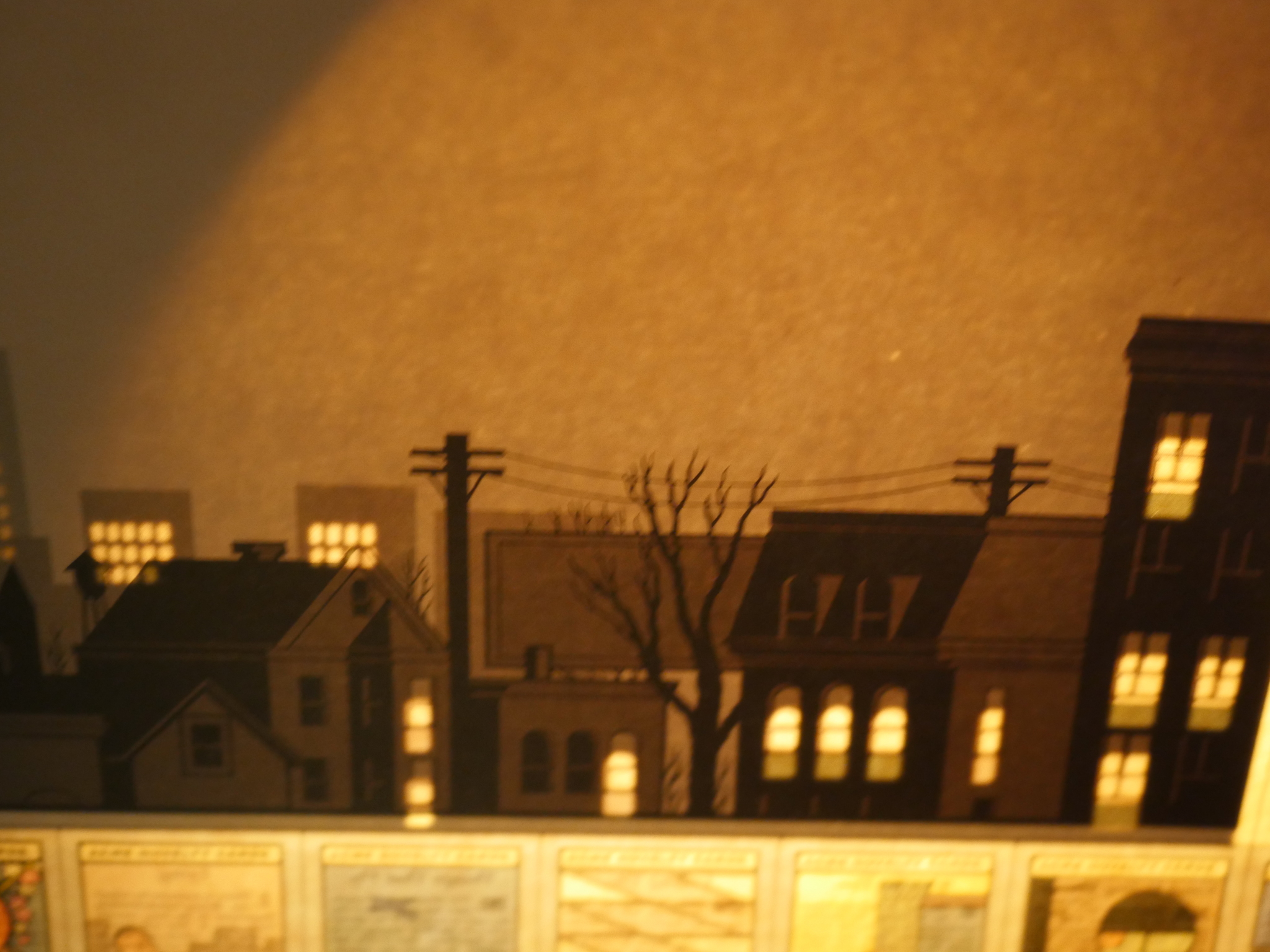
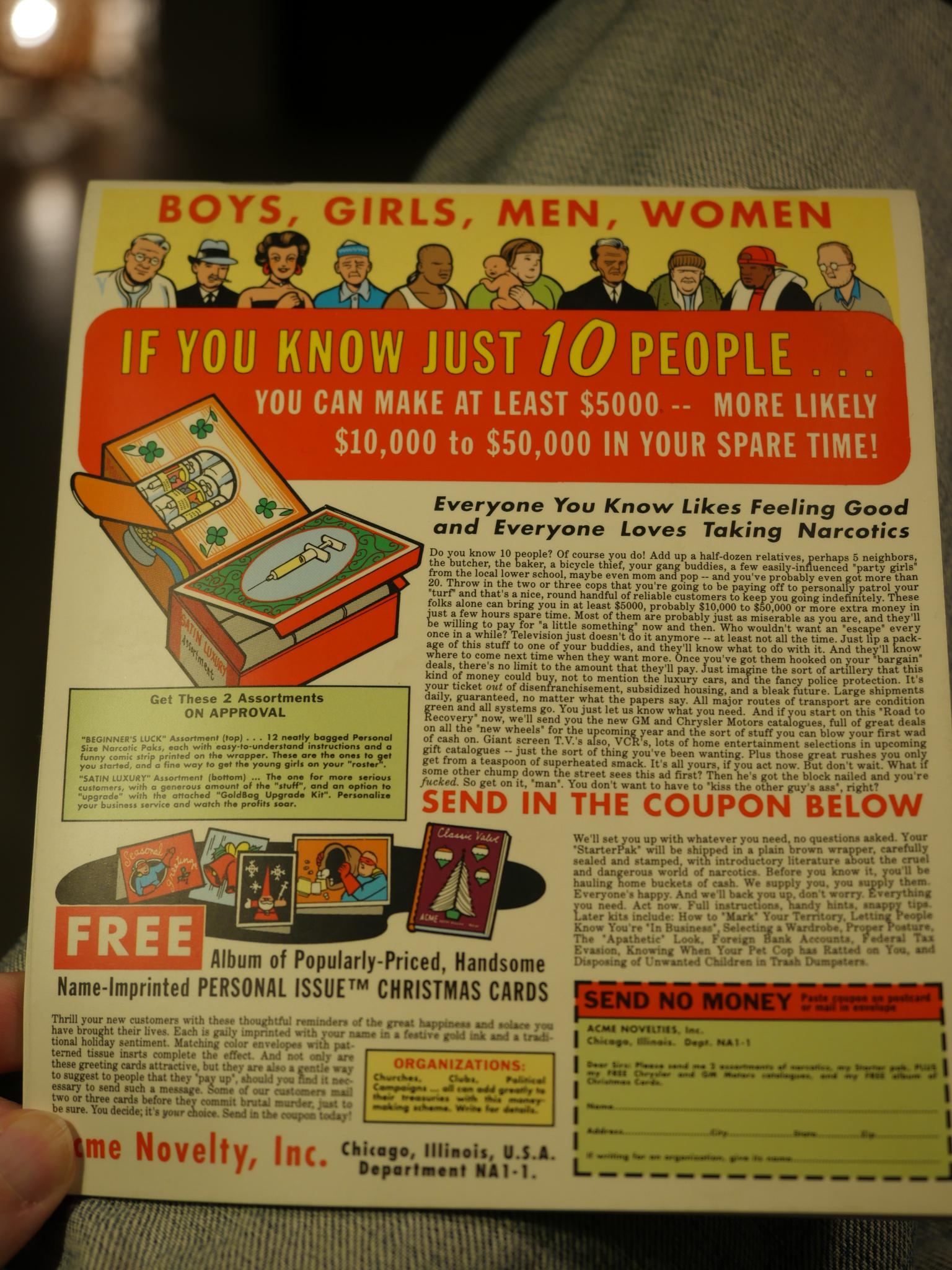
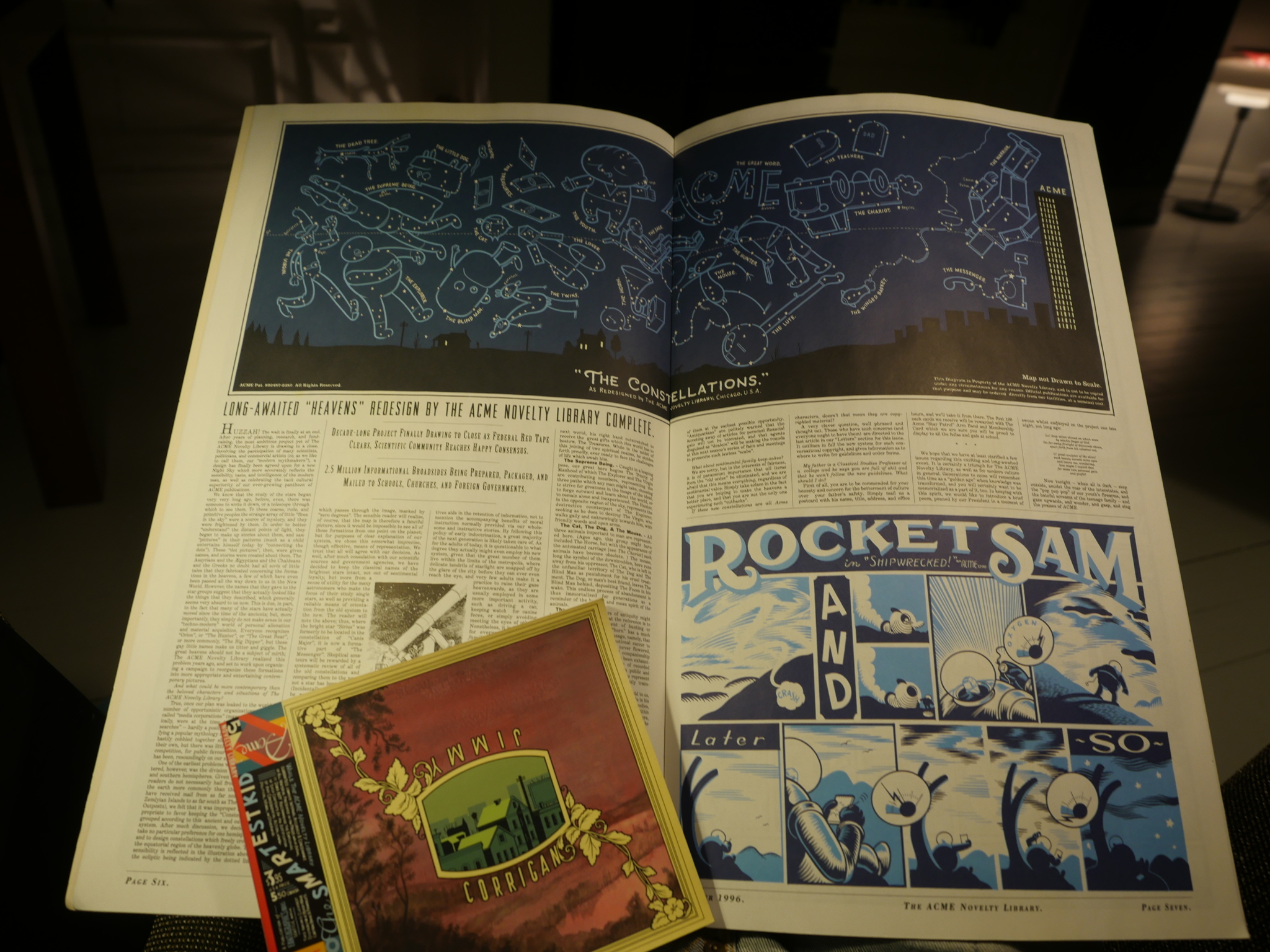
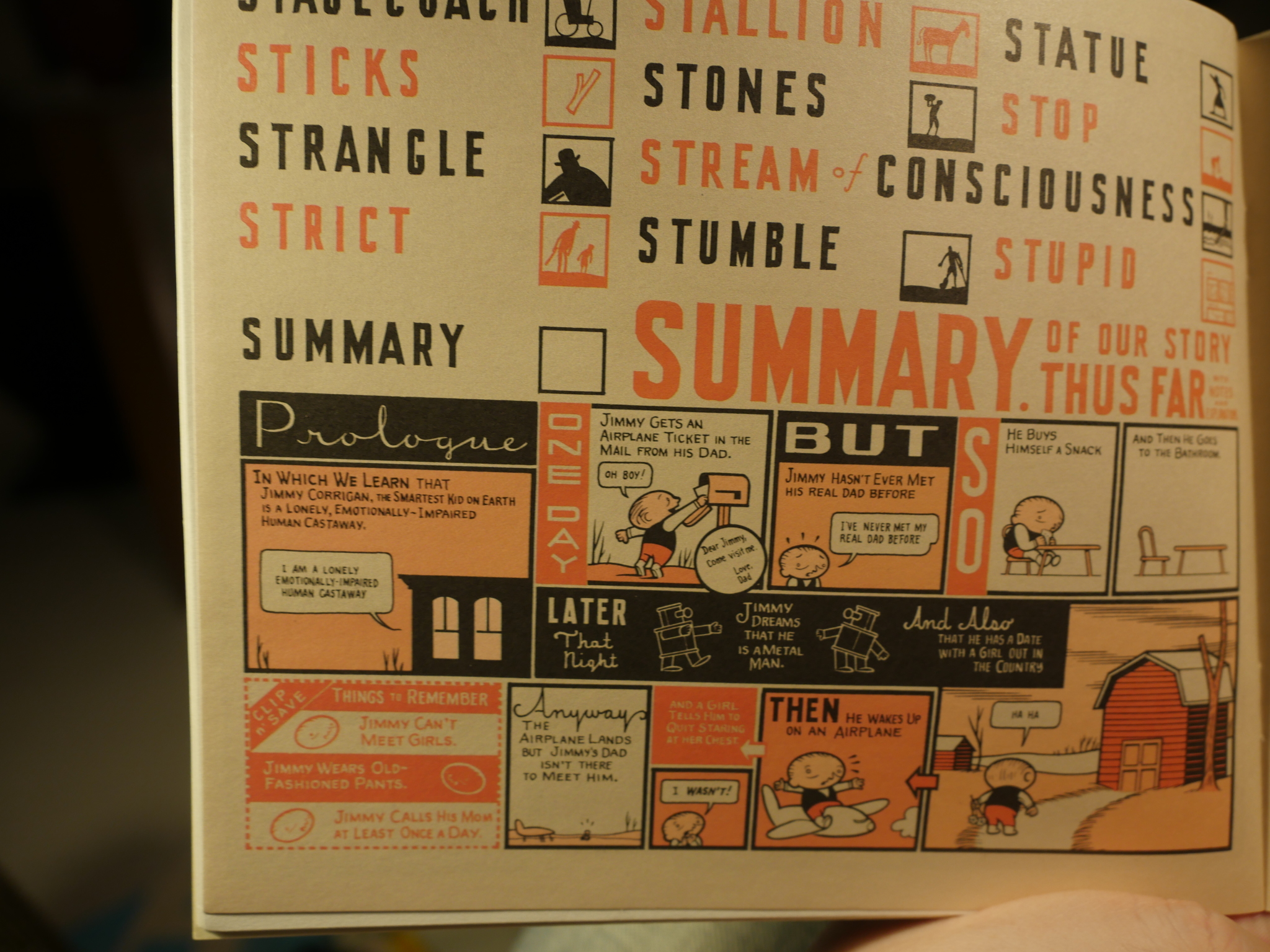
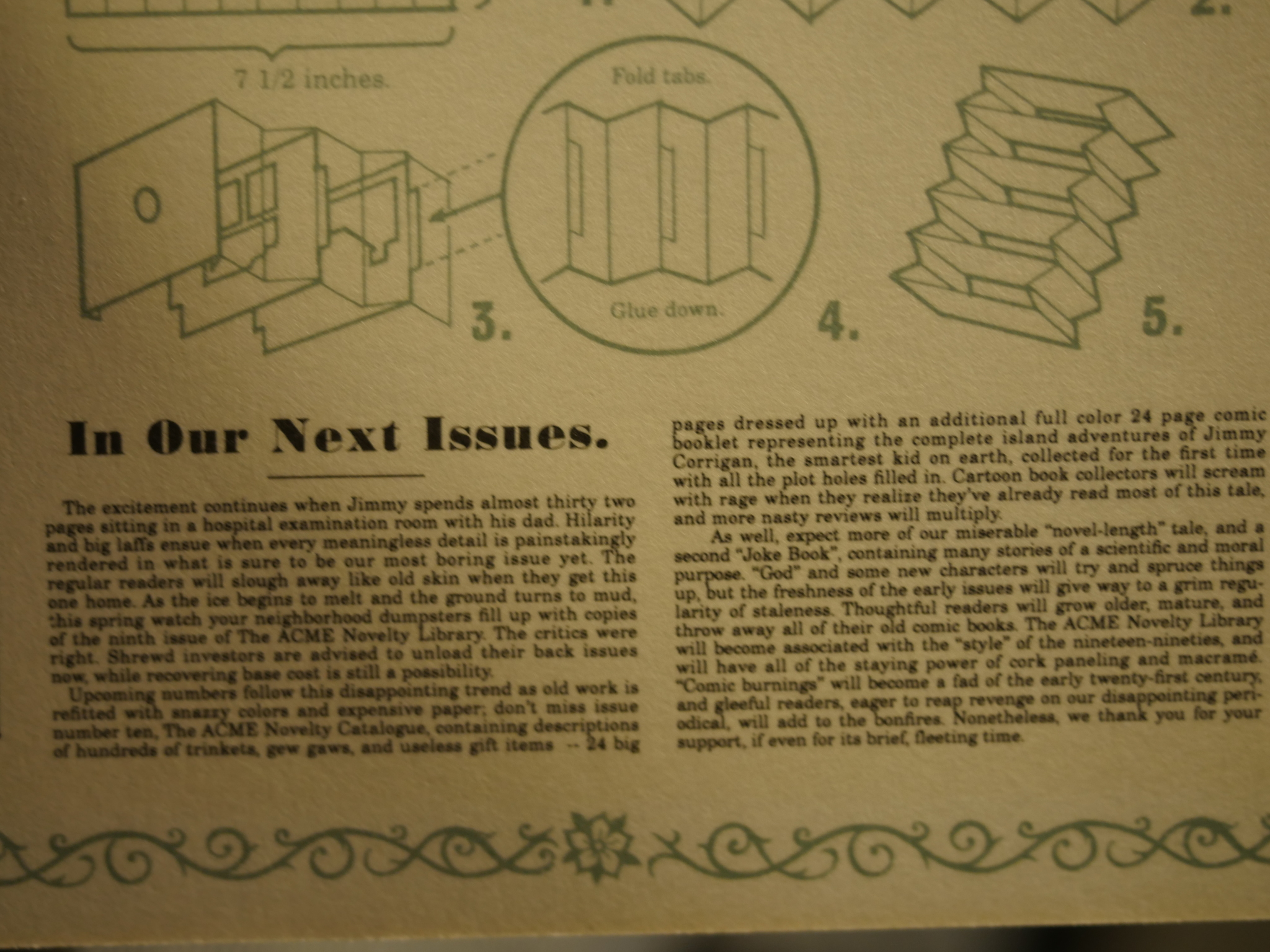
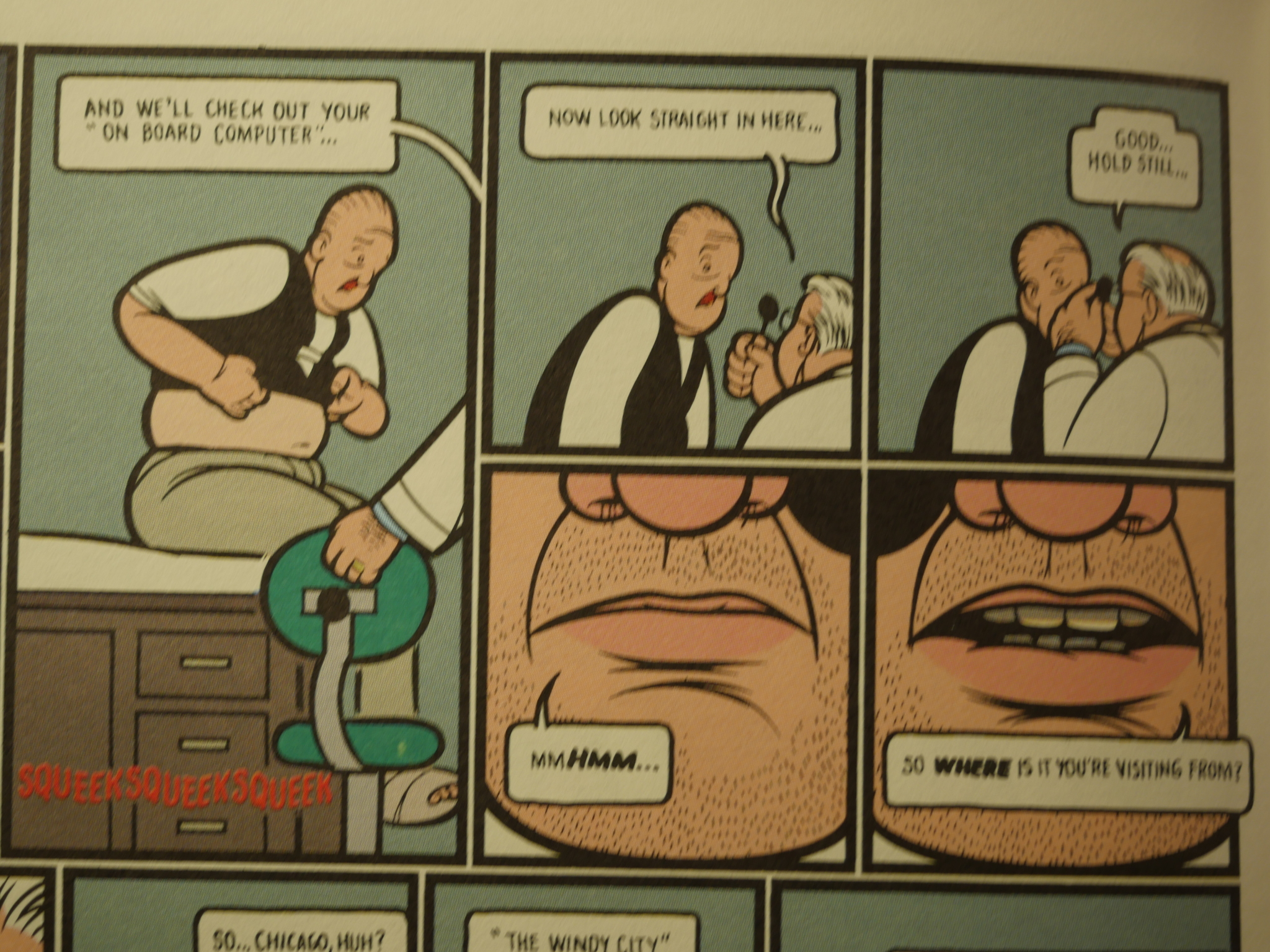
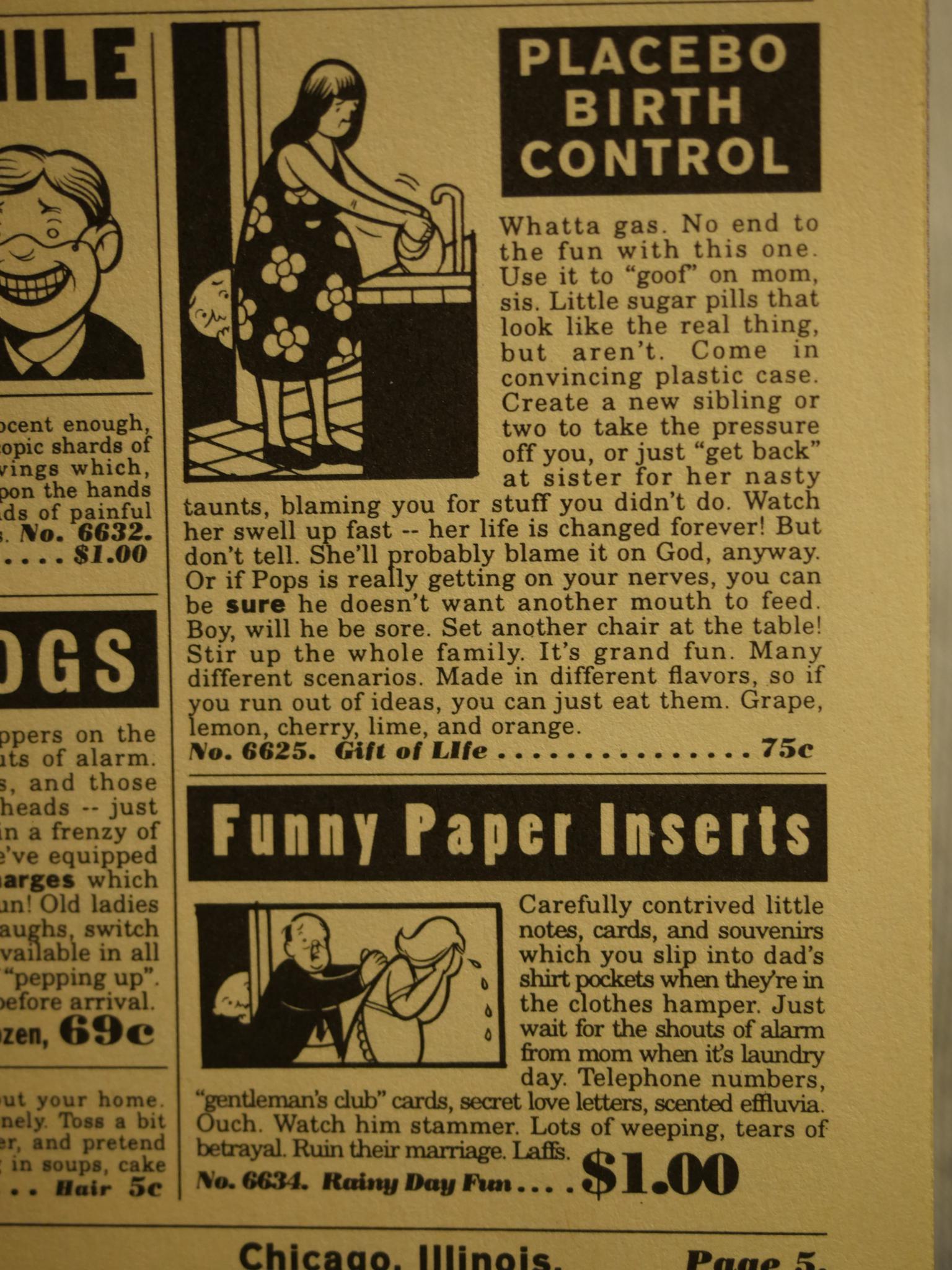
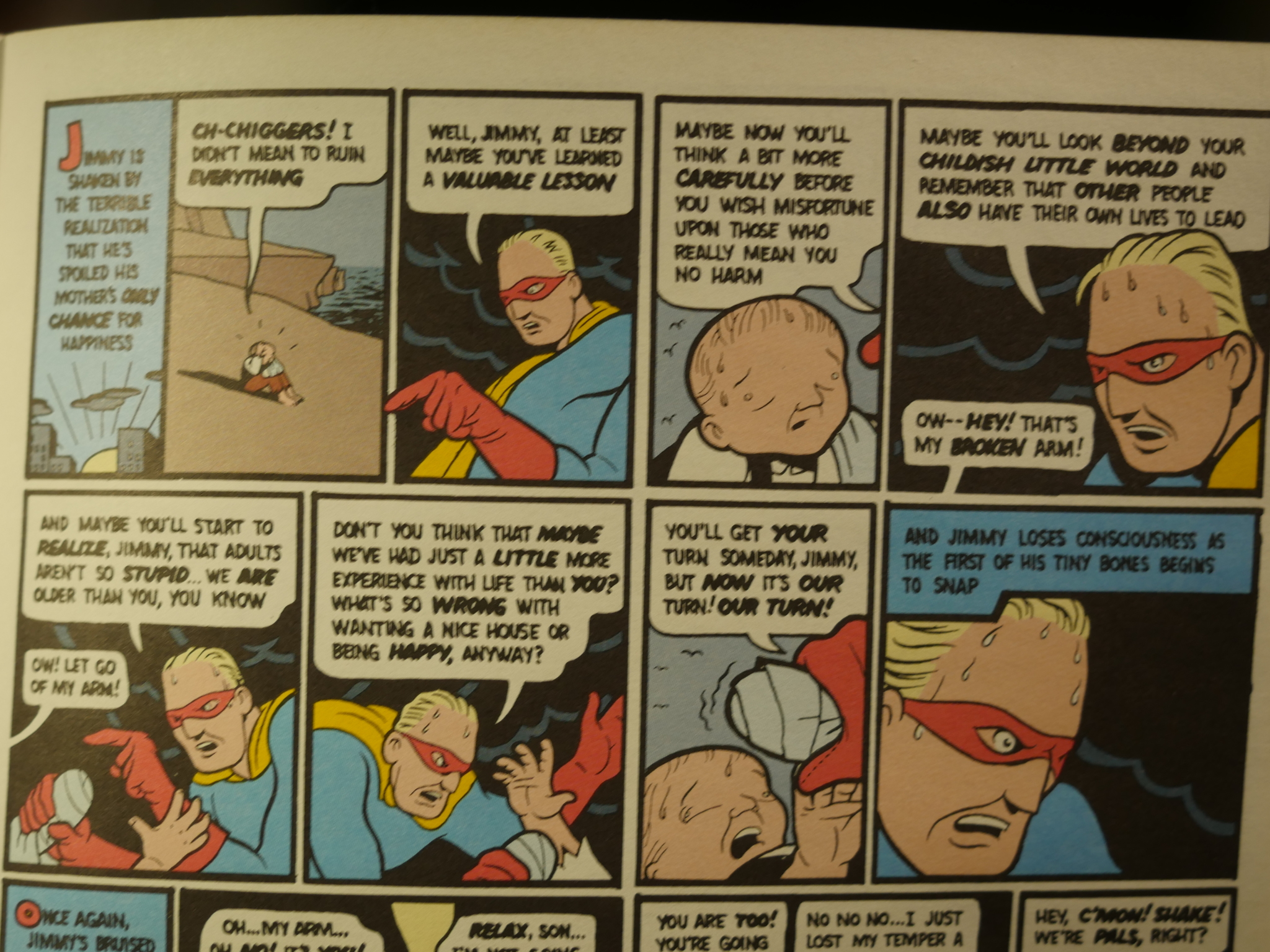
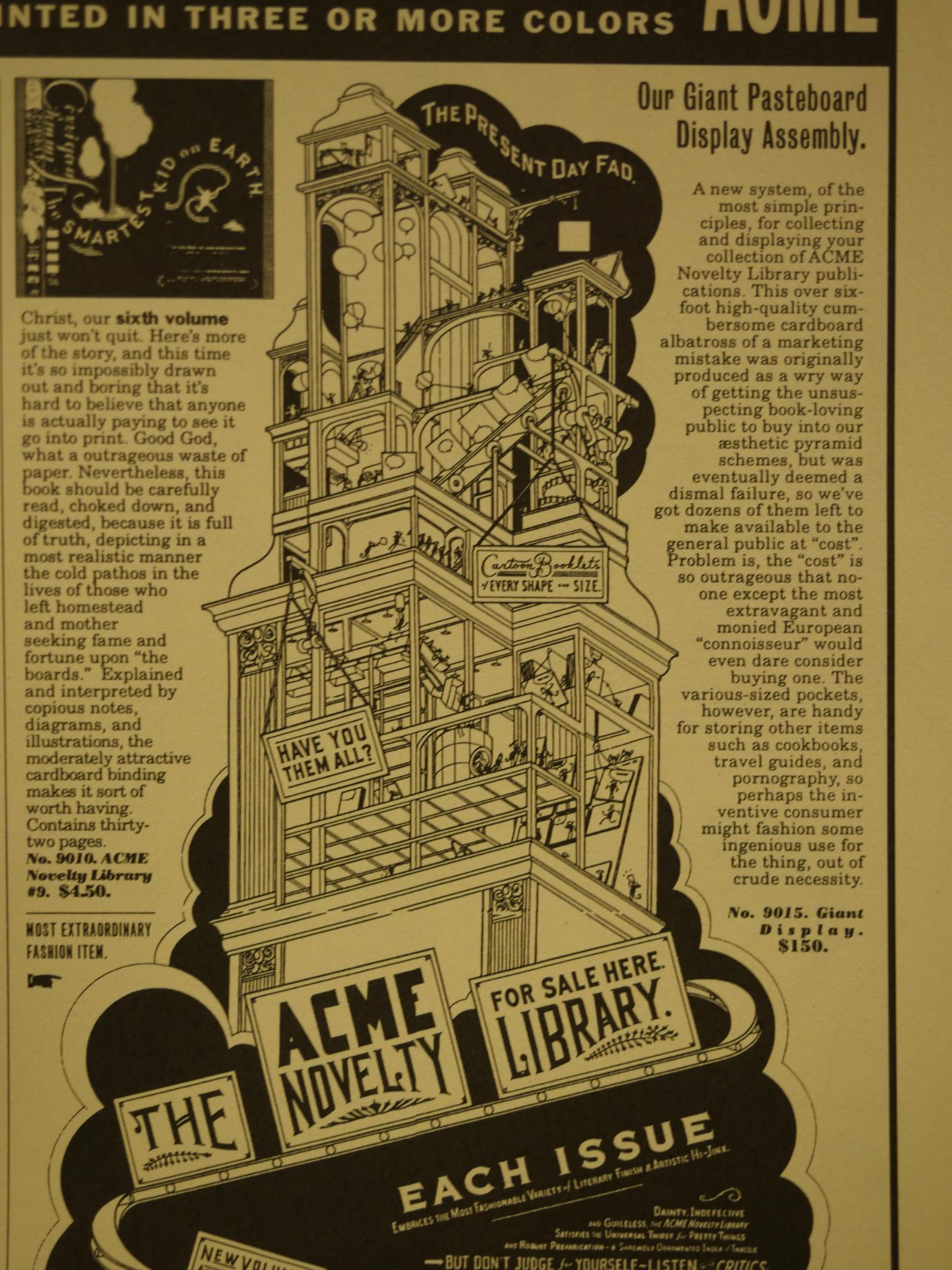

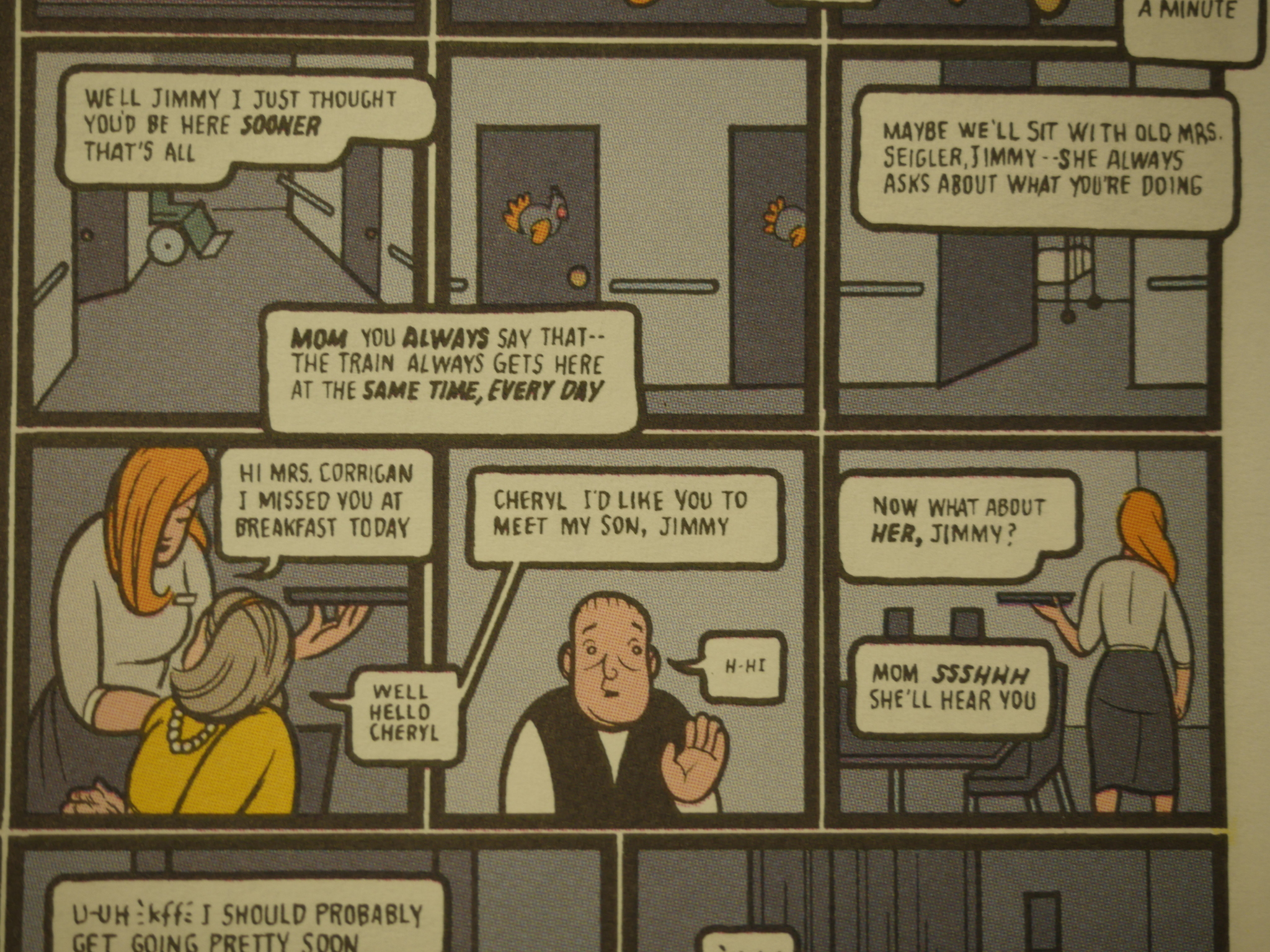
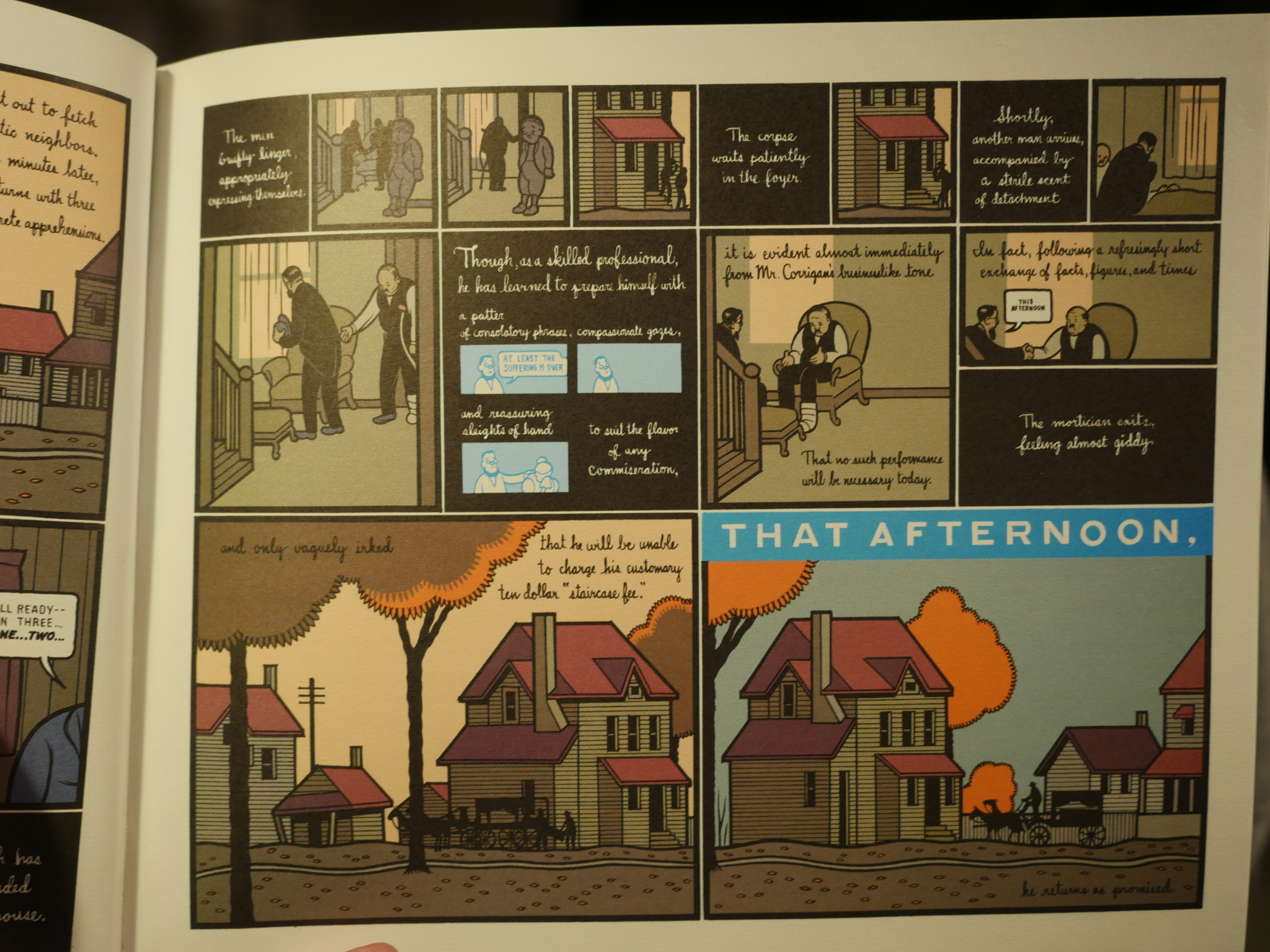
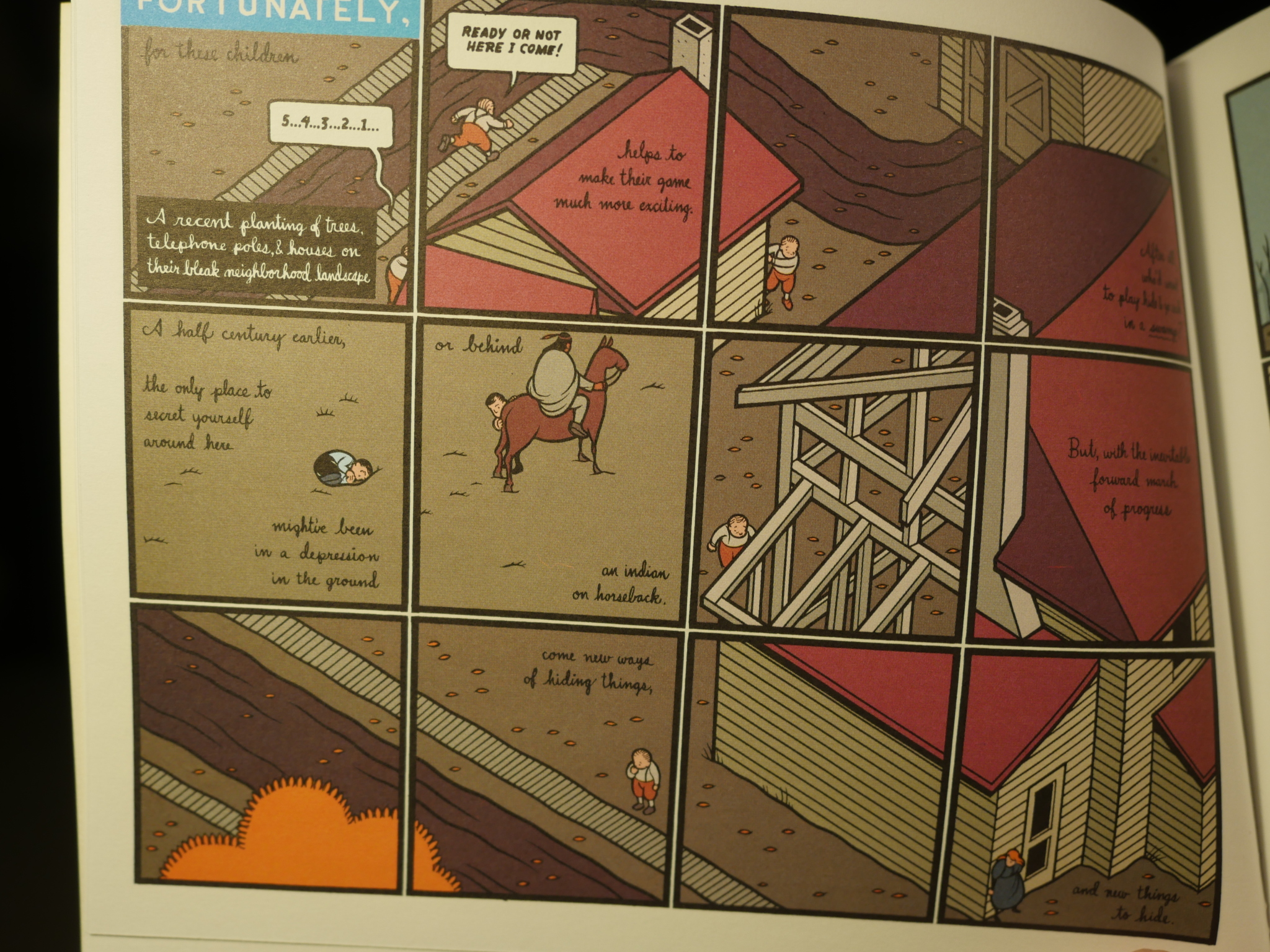
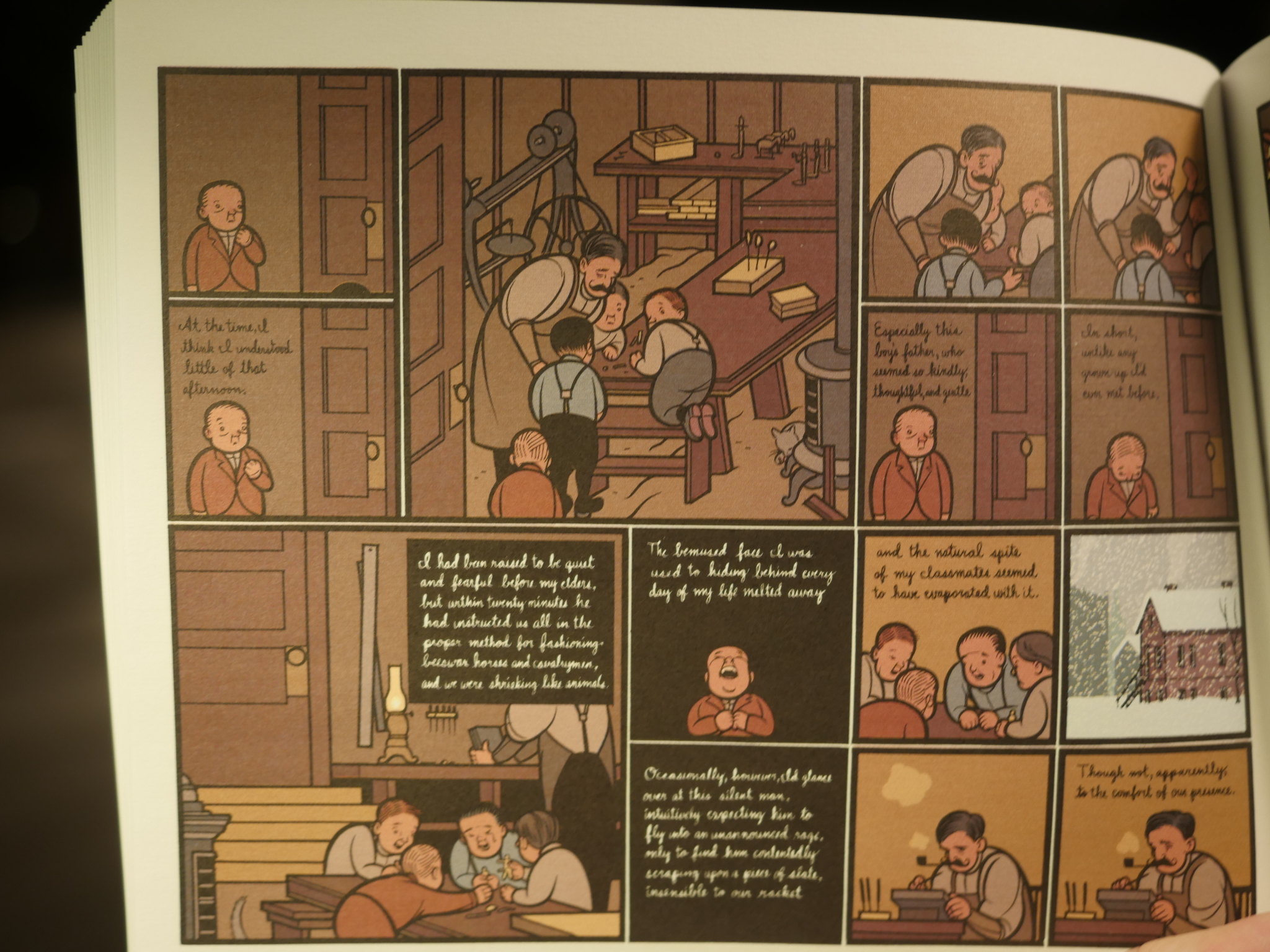

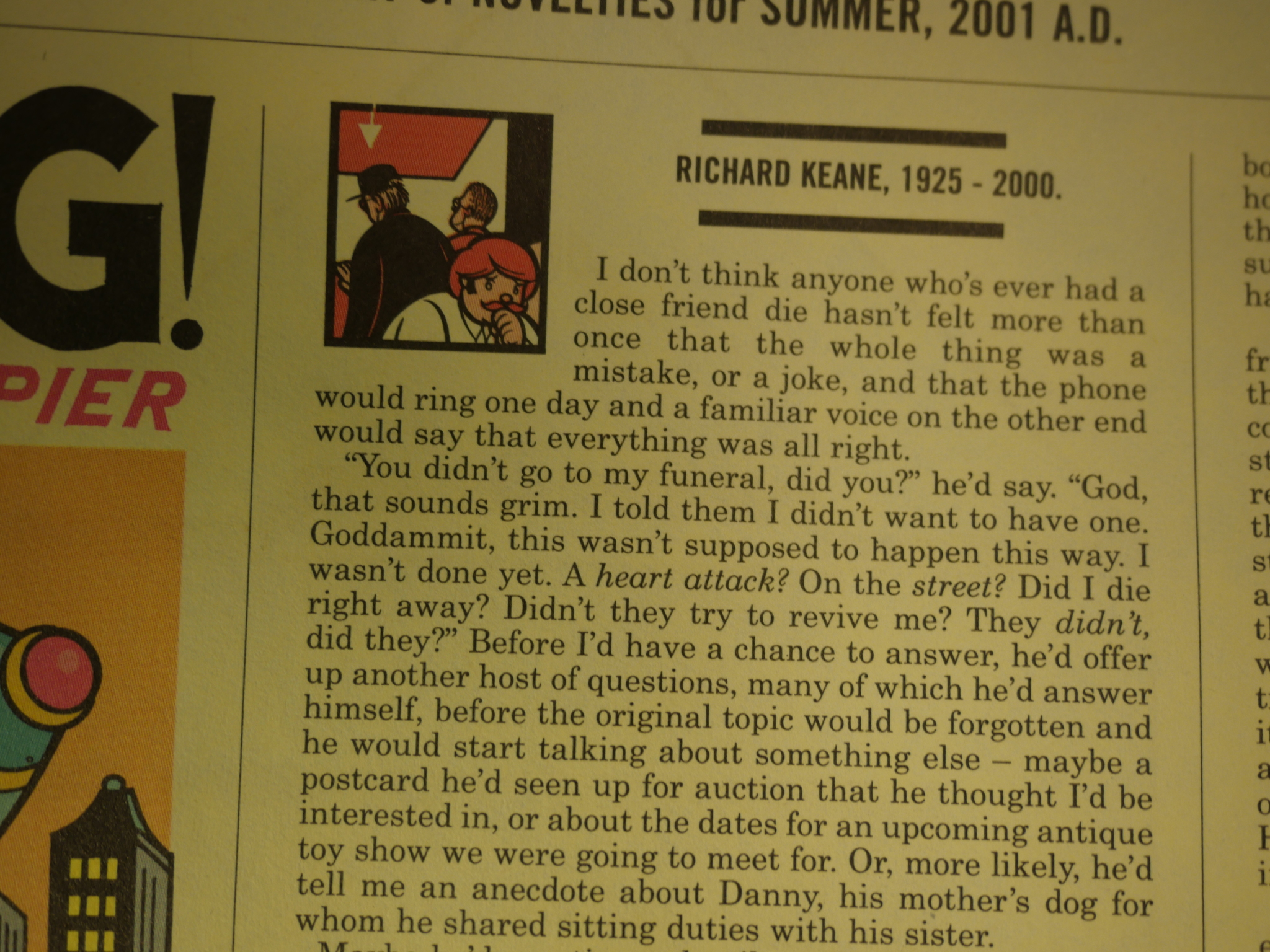
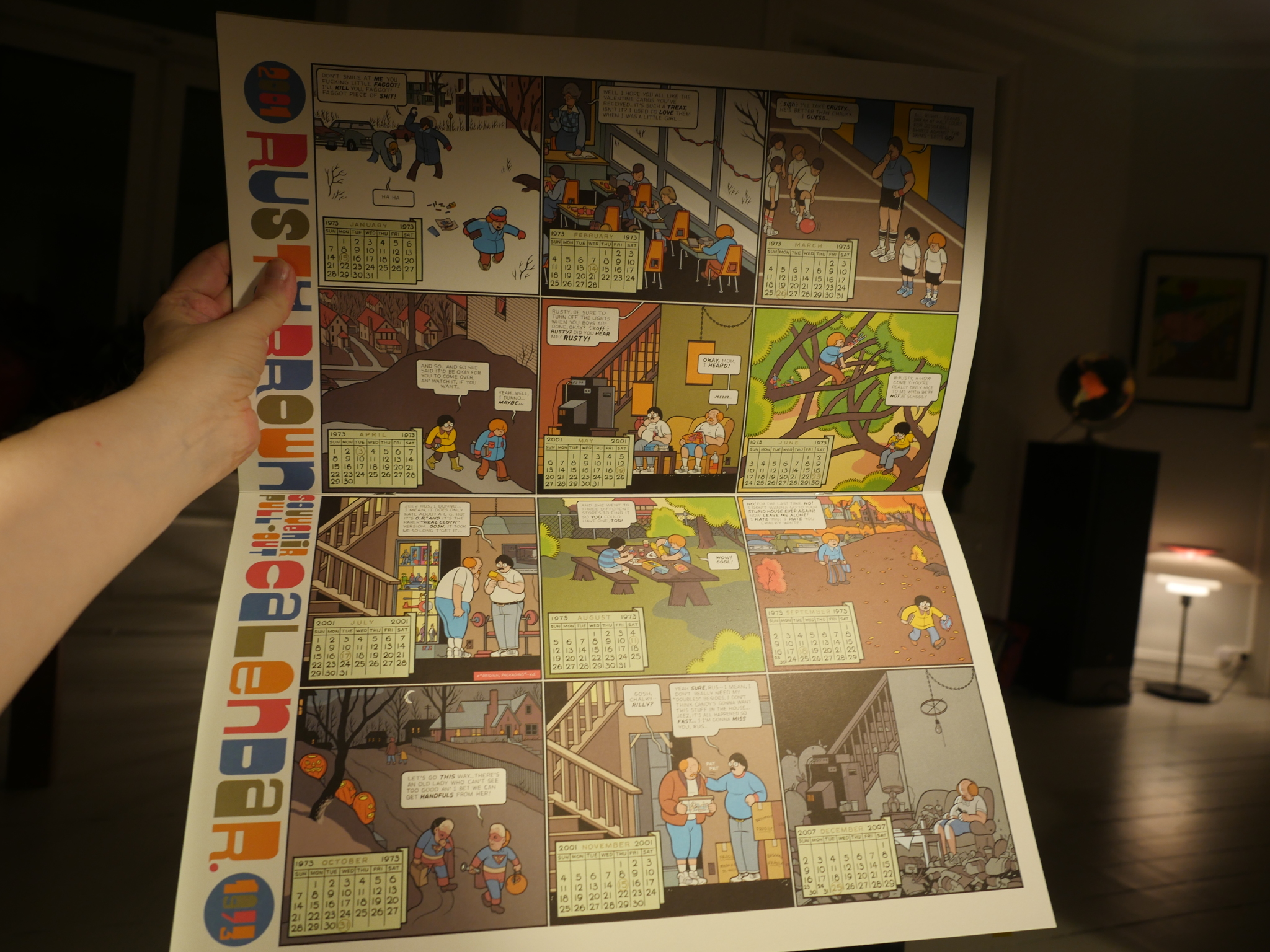

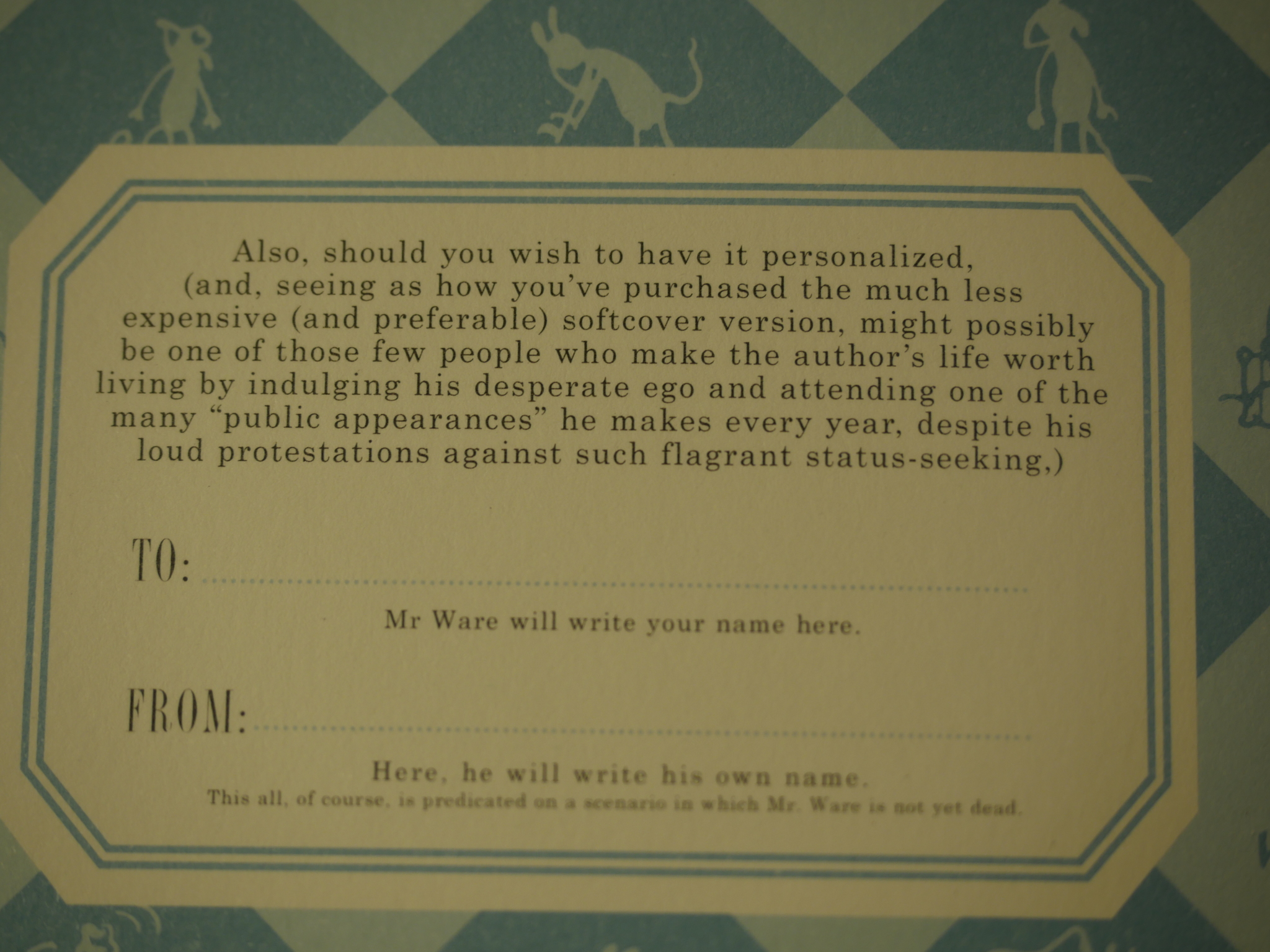
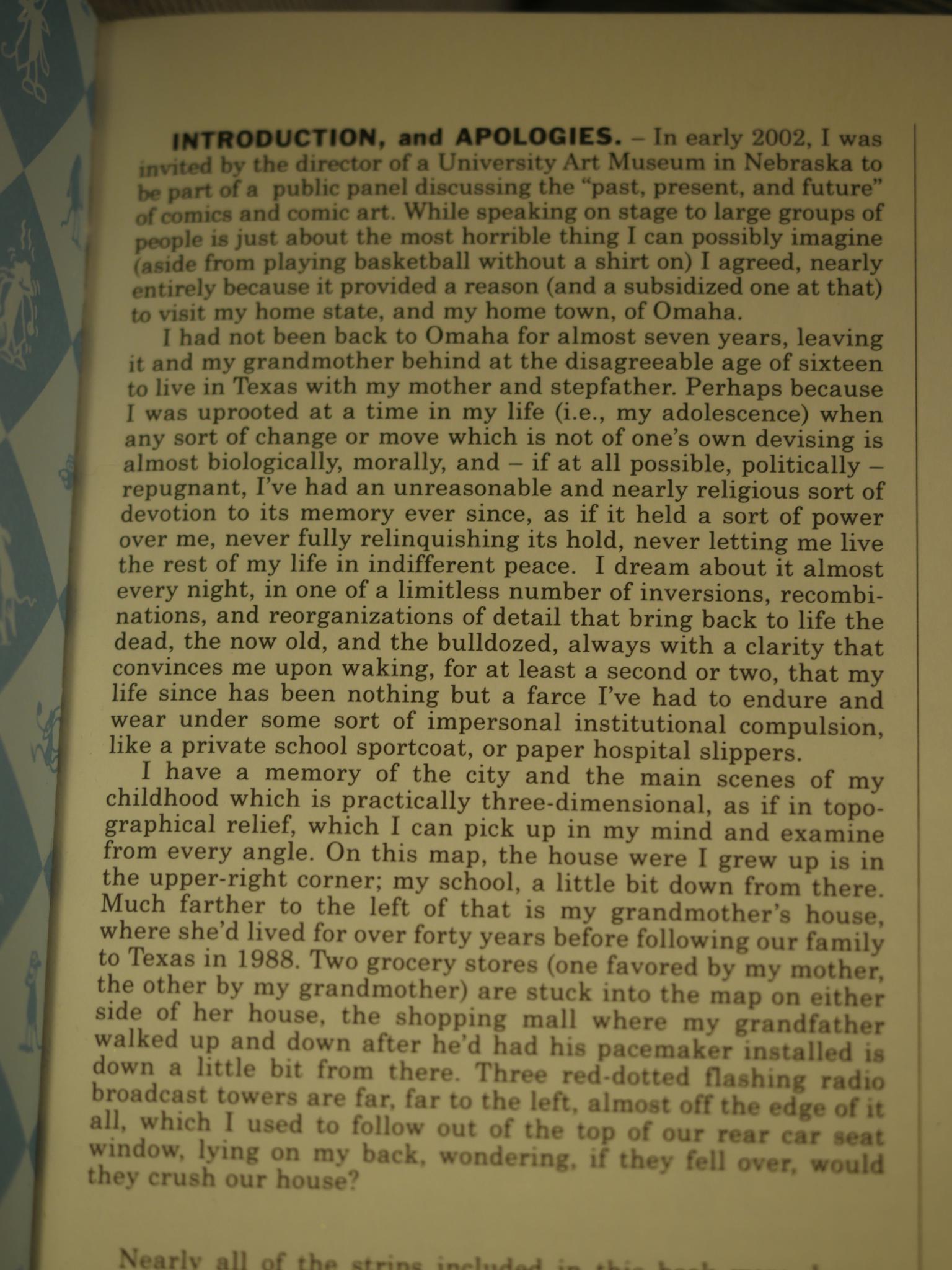
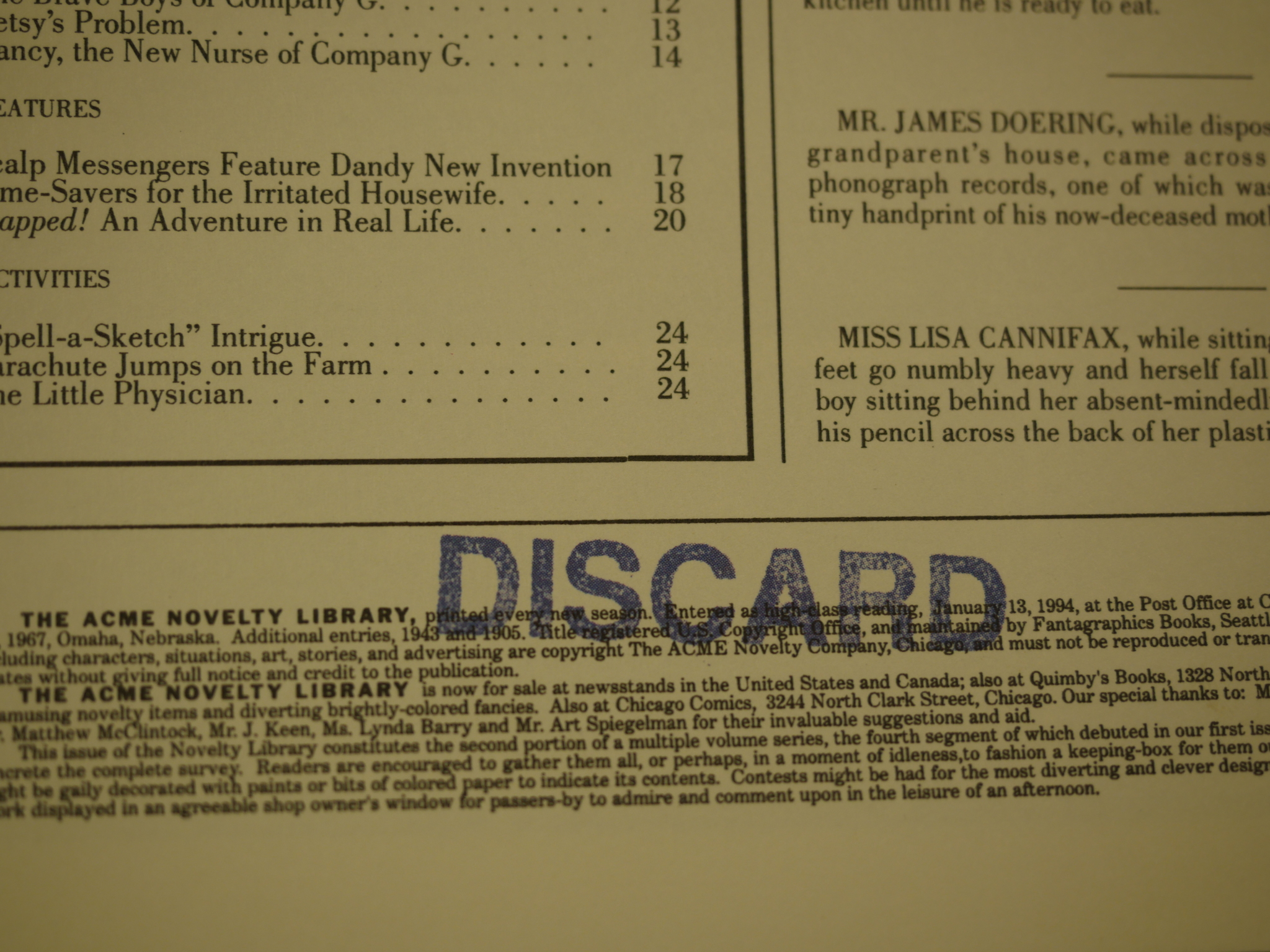
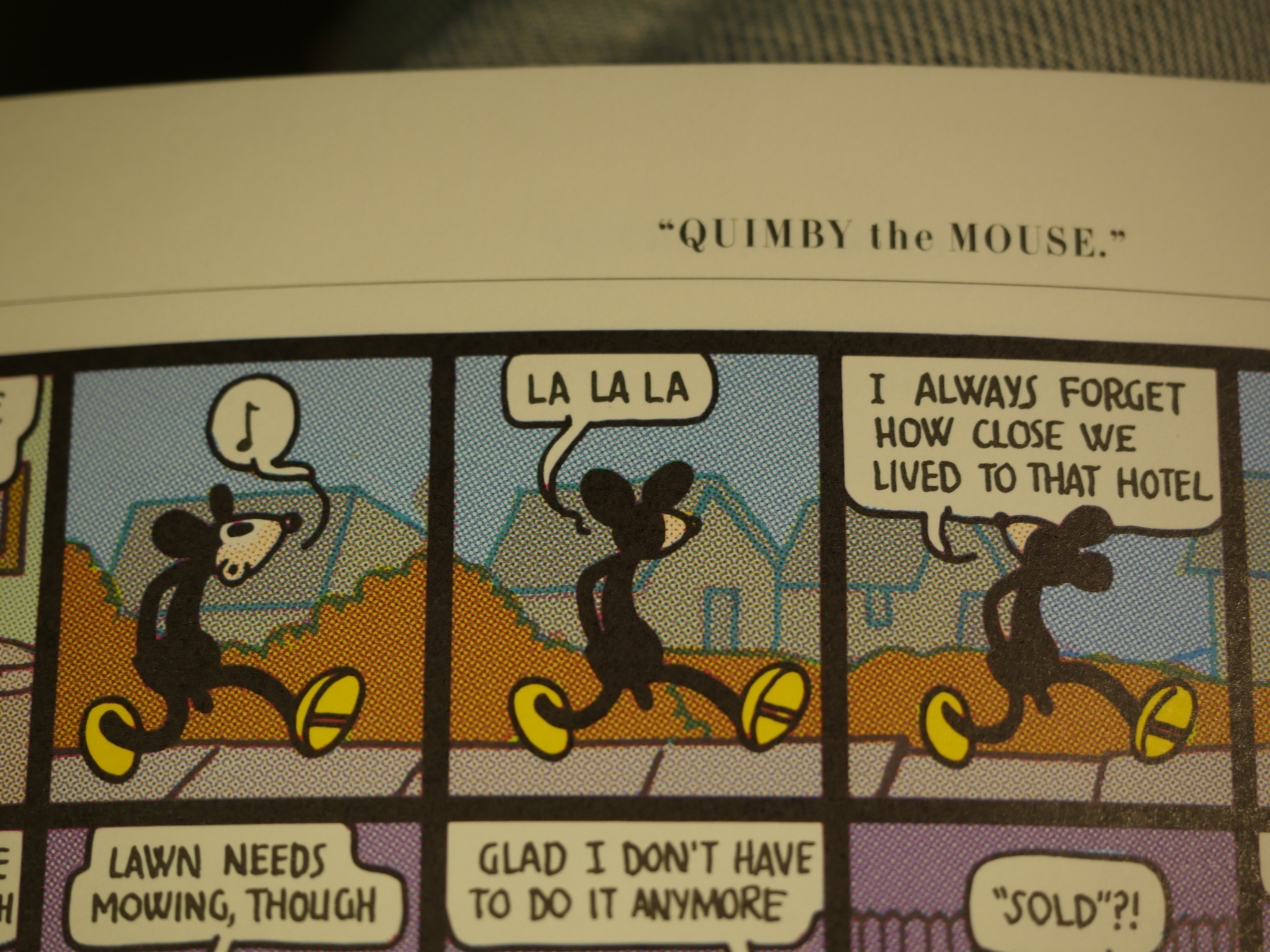
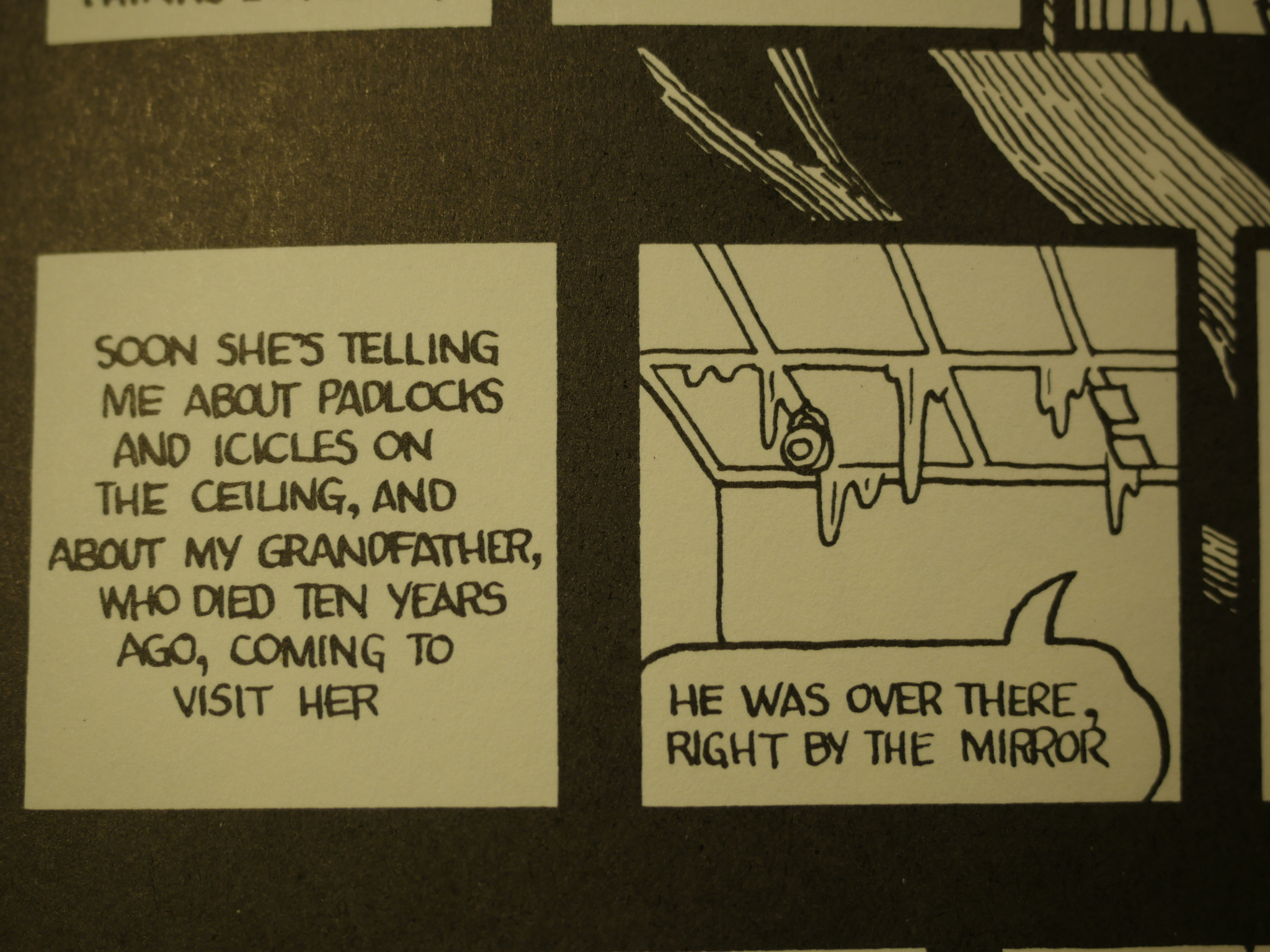
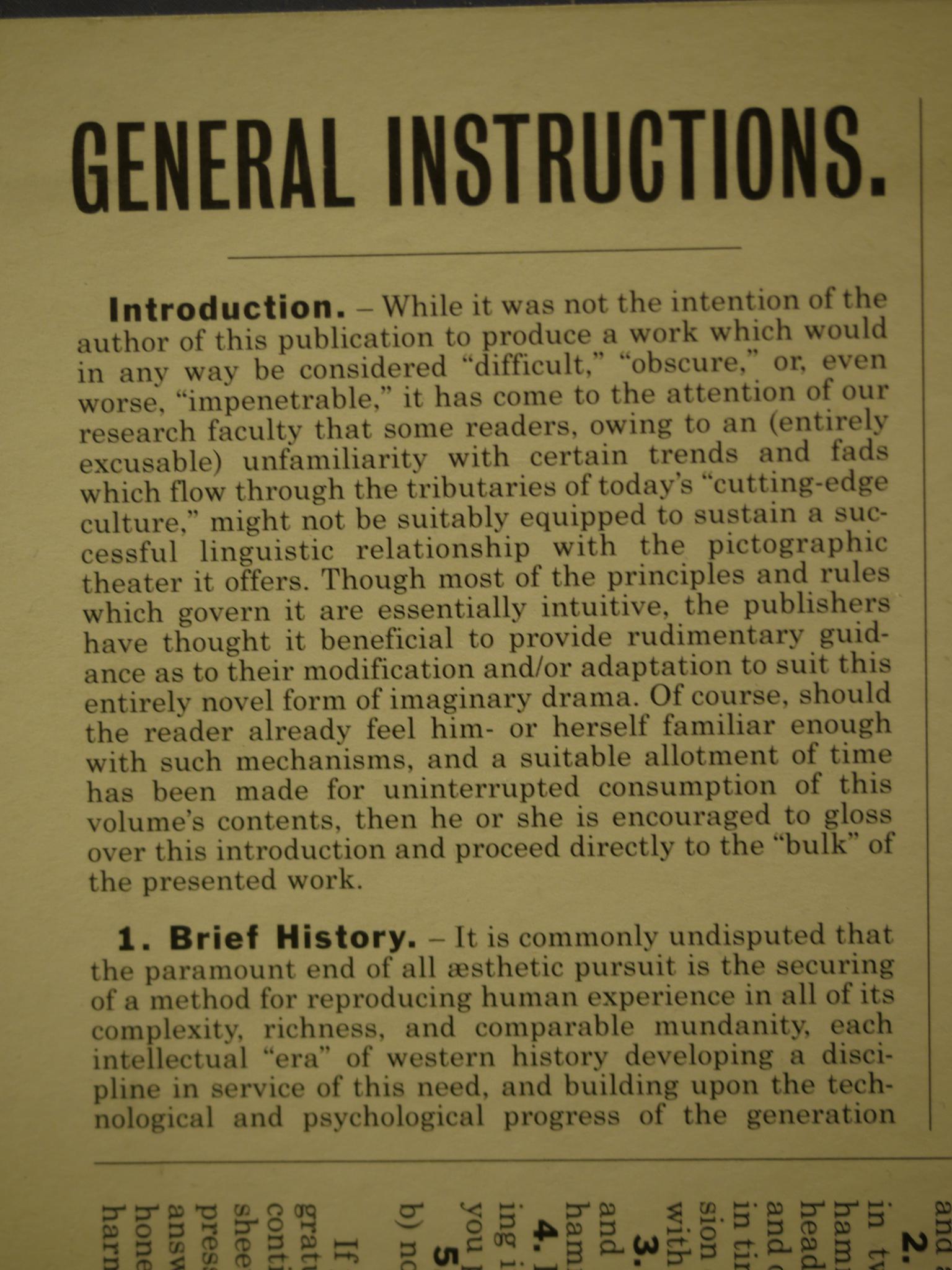
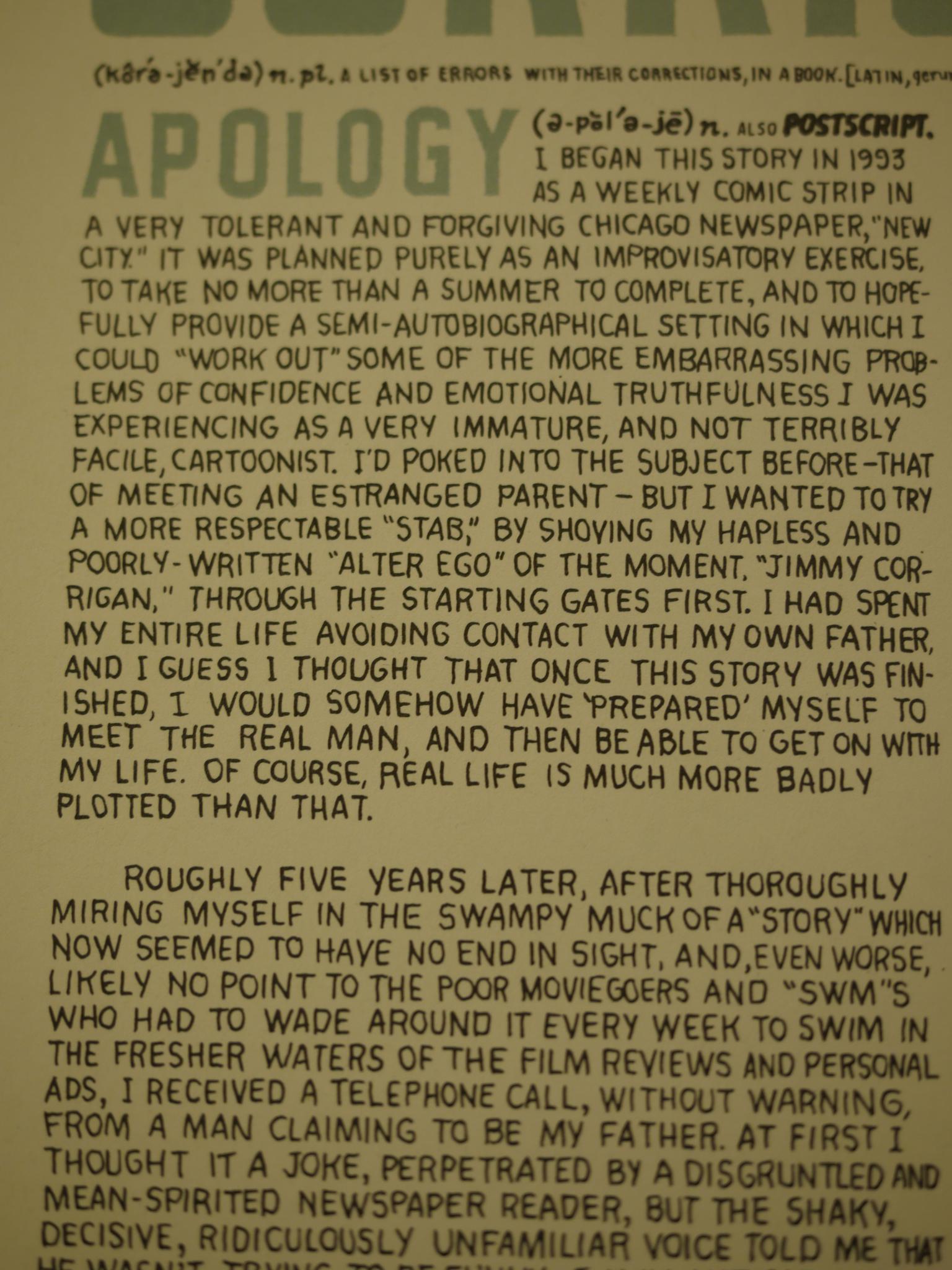
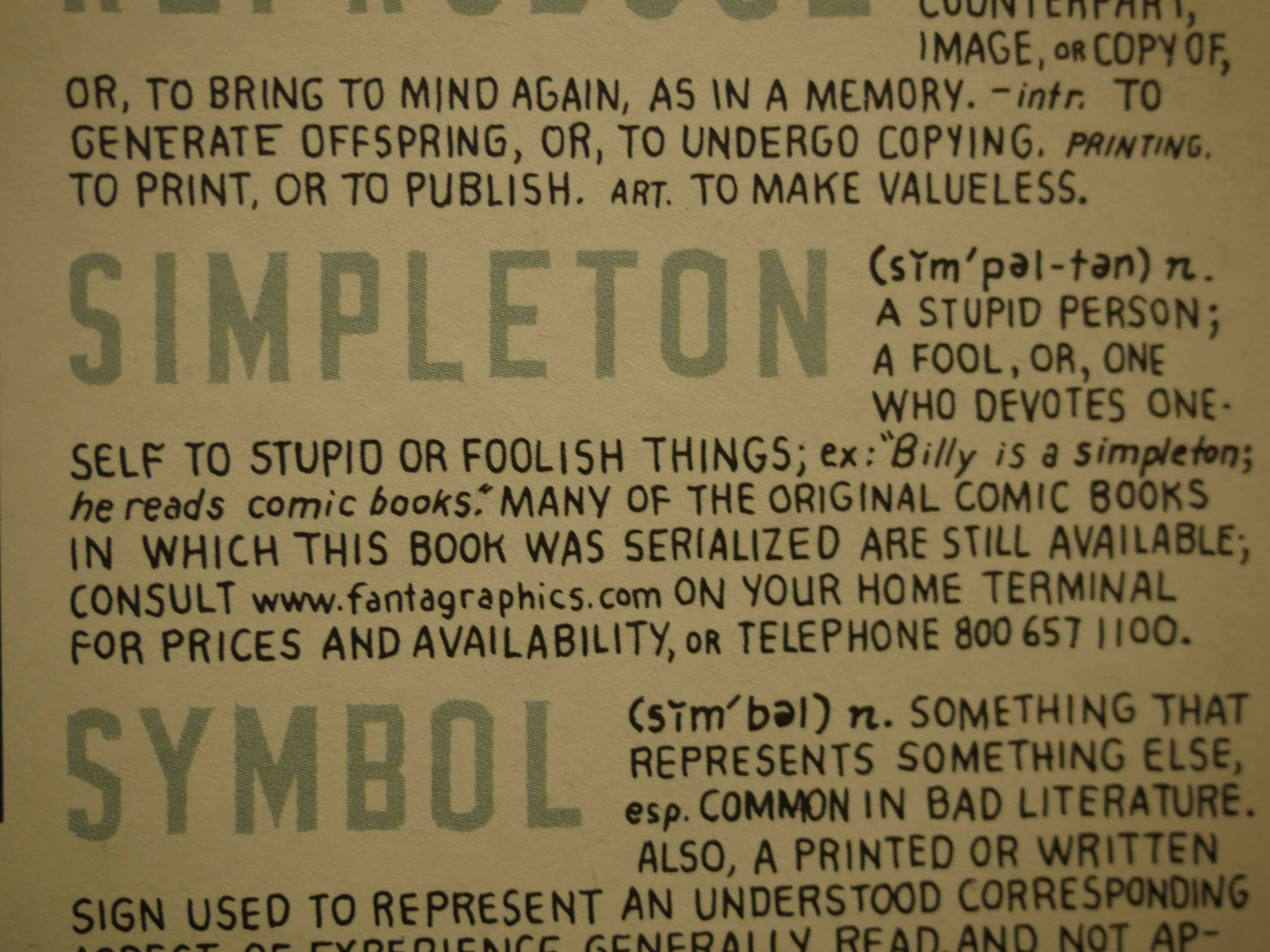
Well this is an exhausting and hilarious endeavor. Thanks for slogging through it all. I’m jealous of the Acme sales rack.
I actually discovered the site while going down a Shirow > Appleseed > Eclipse rabbit hole. Shirow to Ware, what a trip.
Have you since found the missing #12?